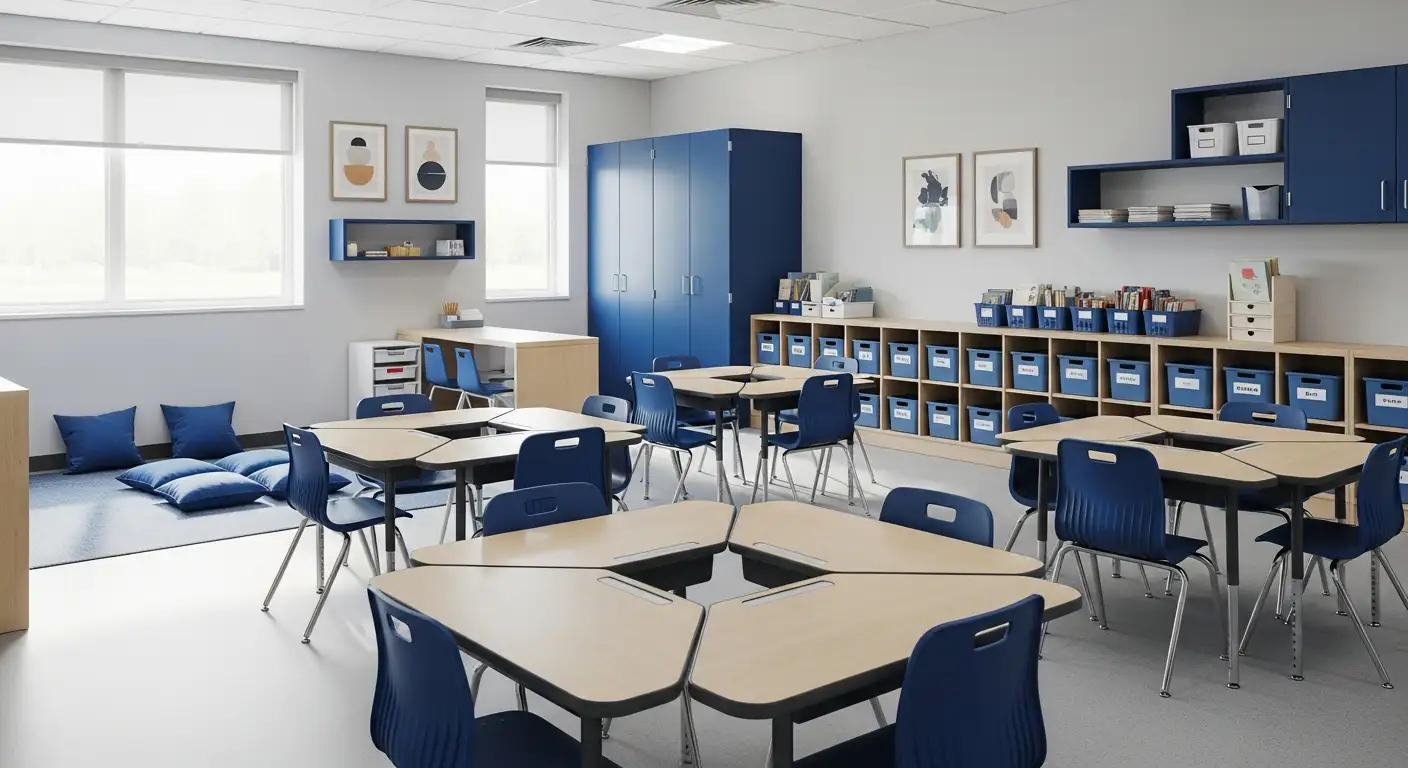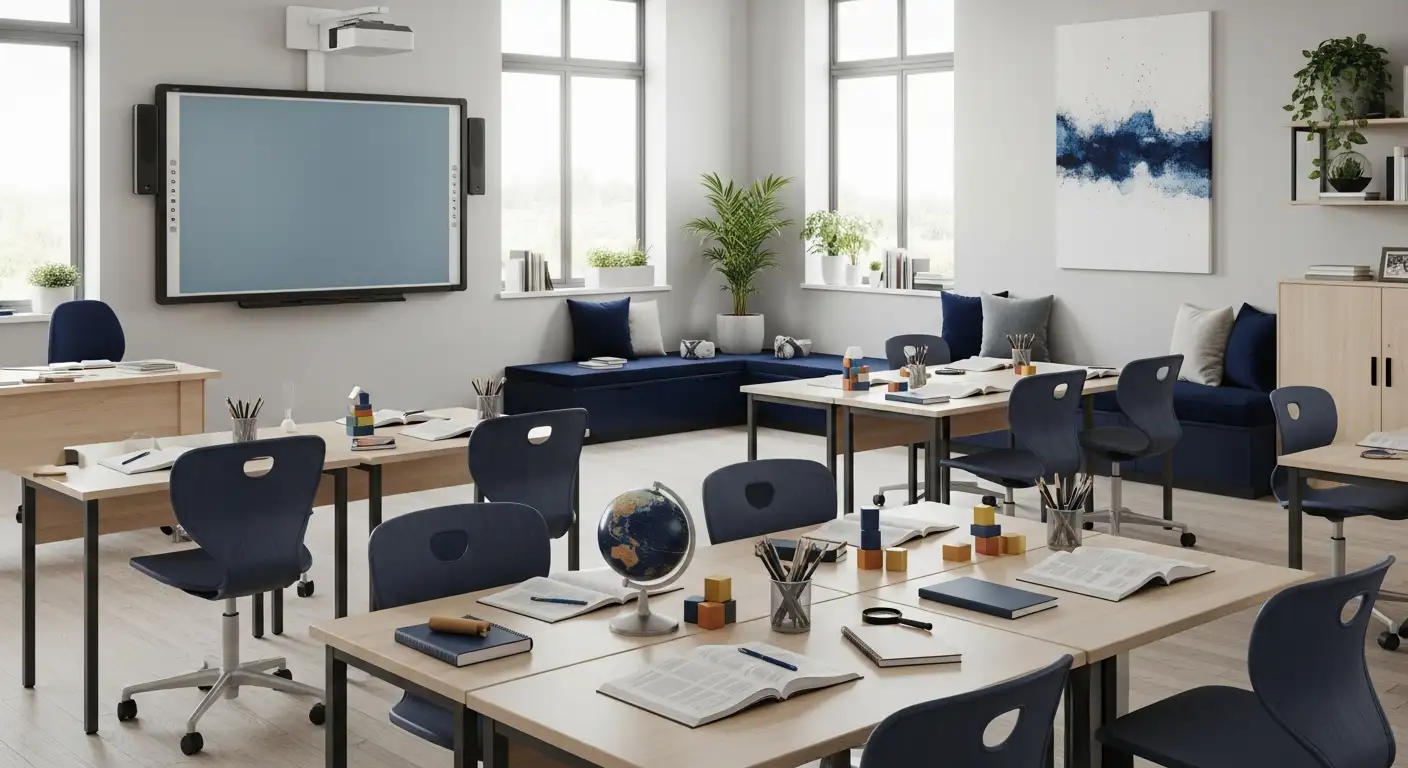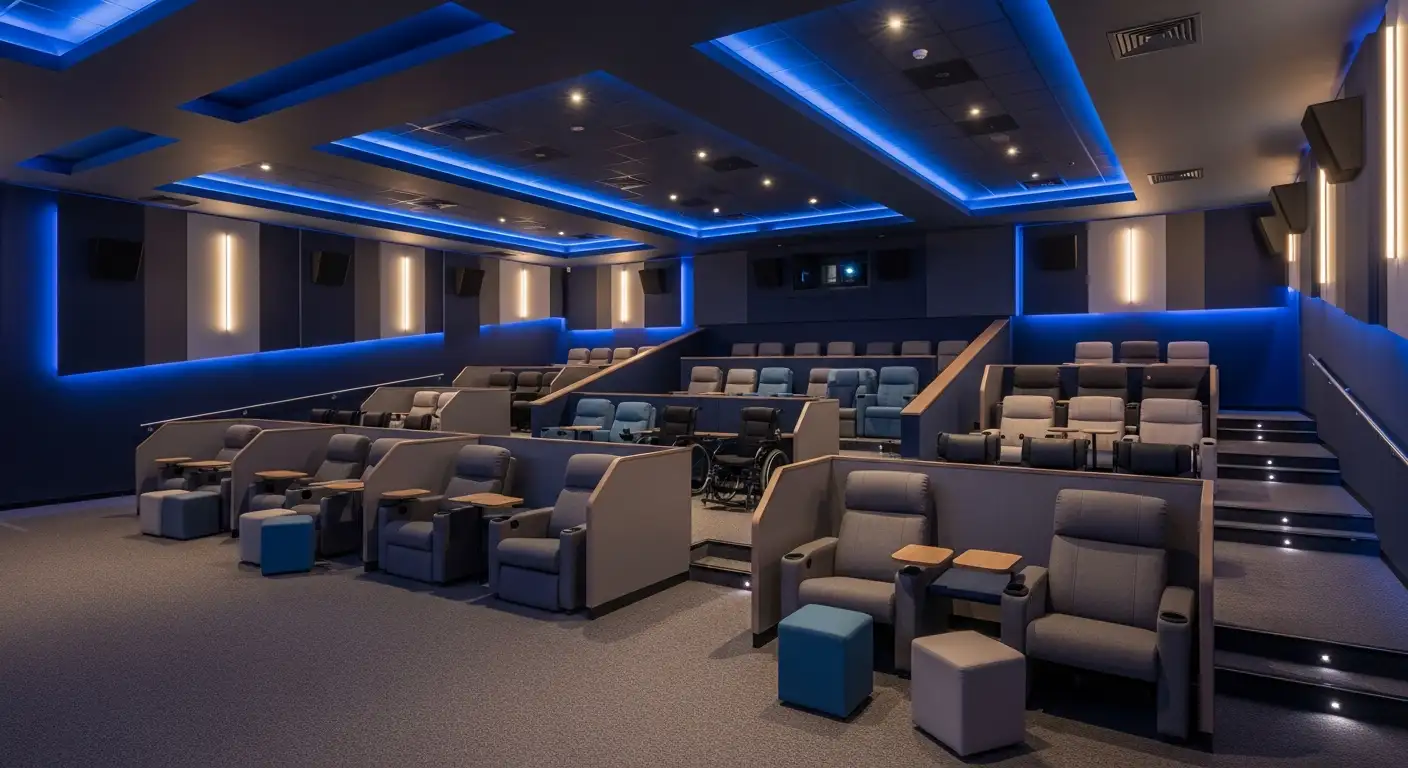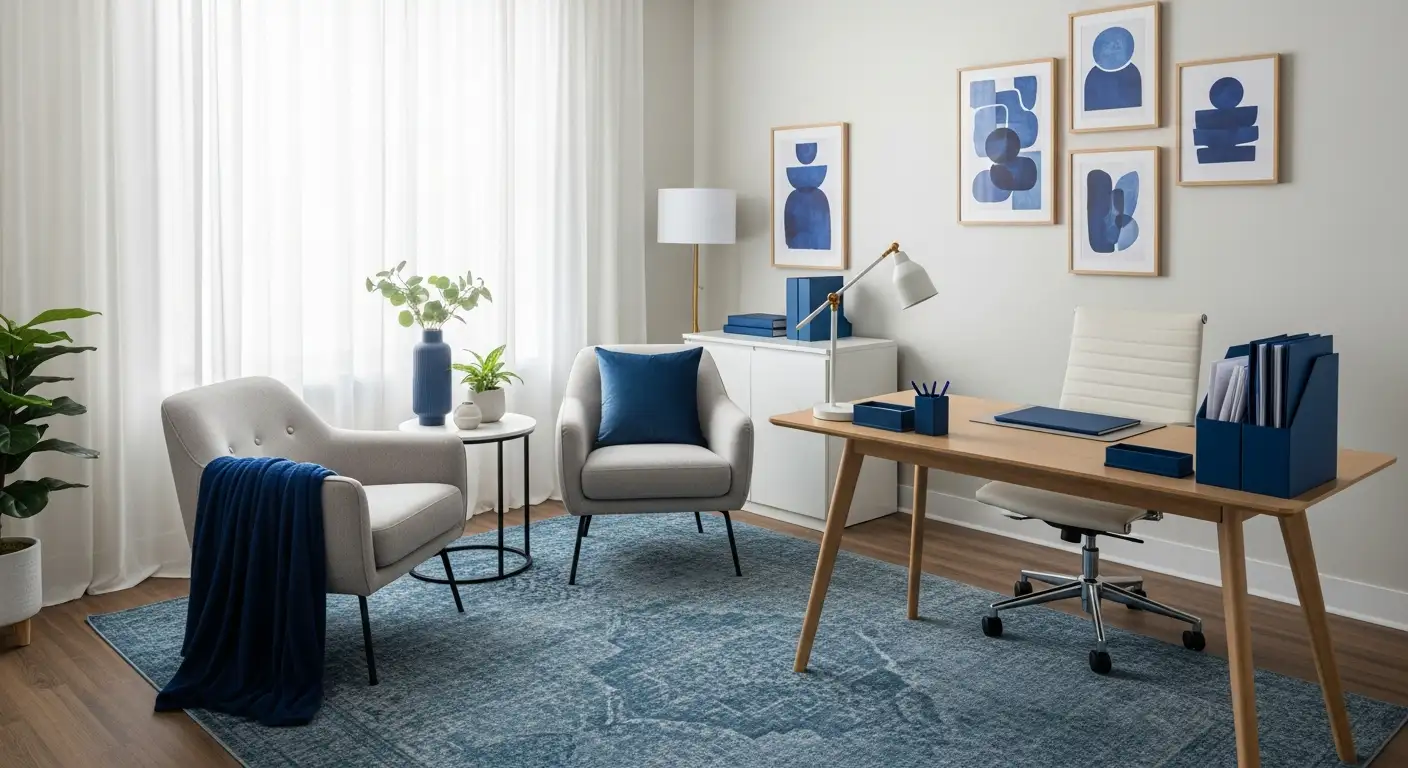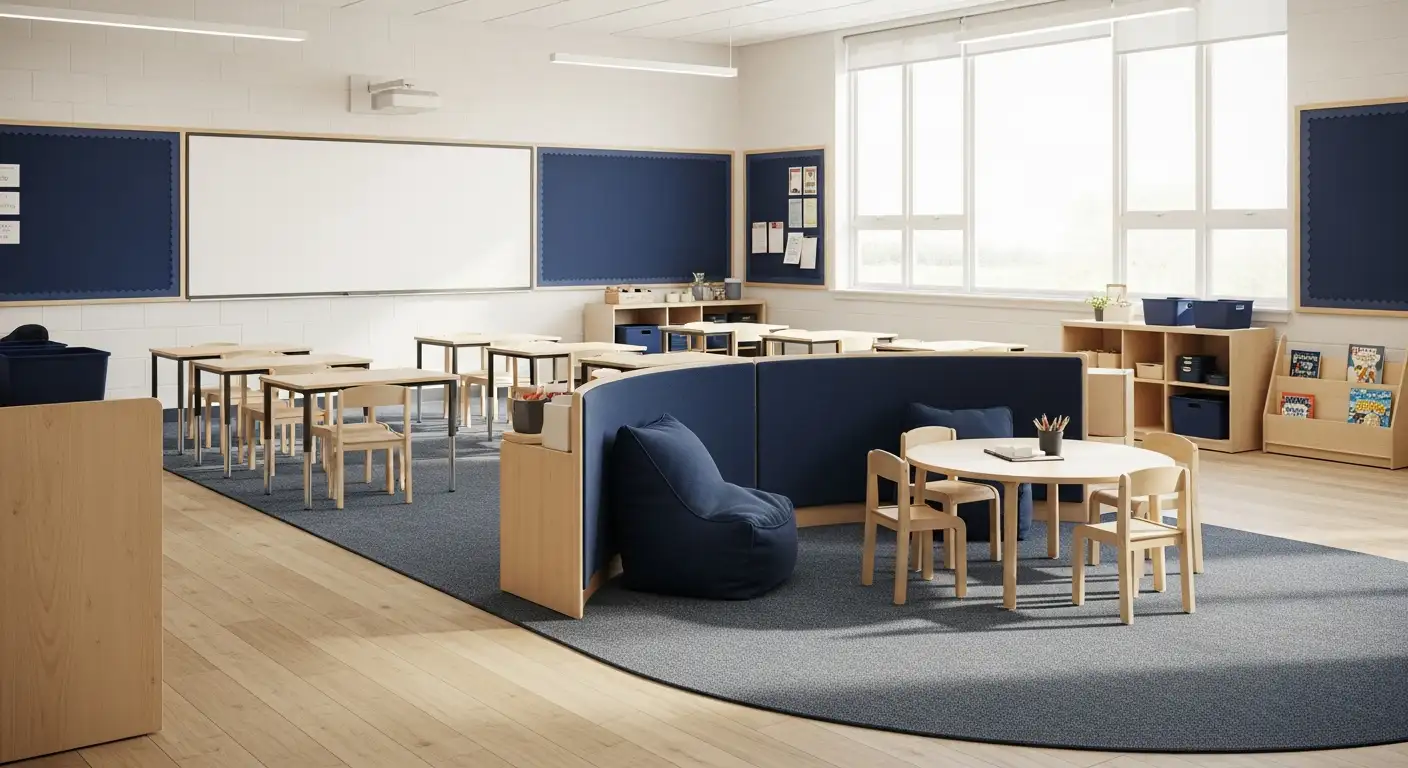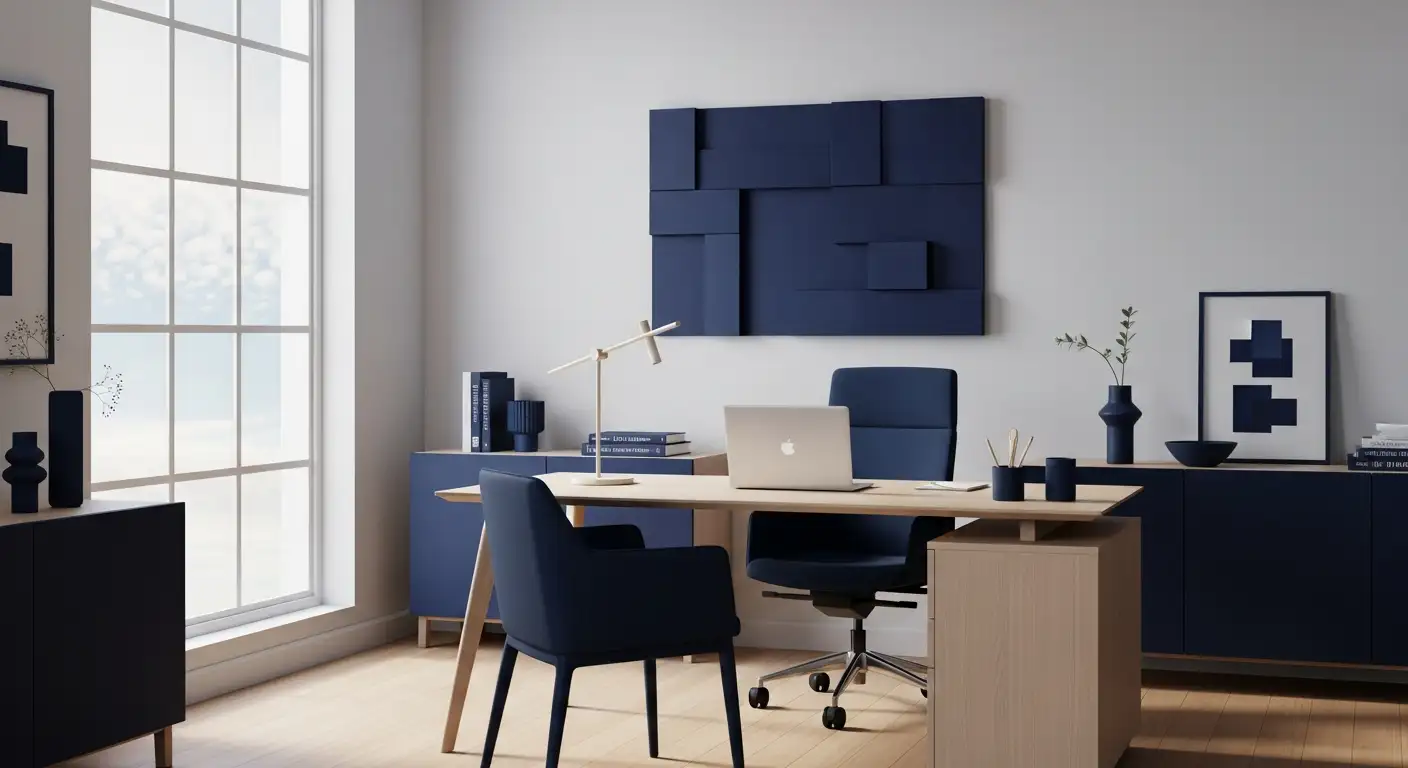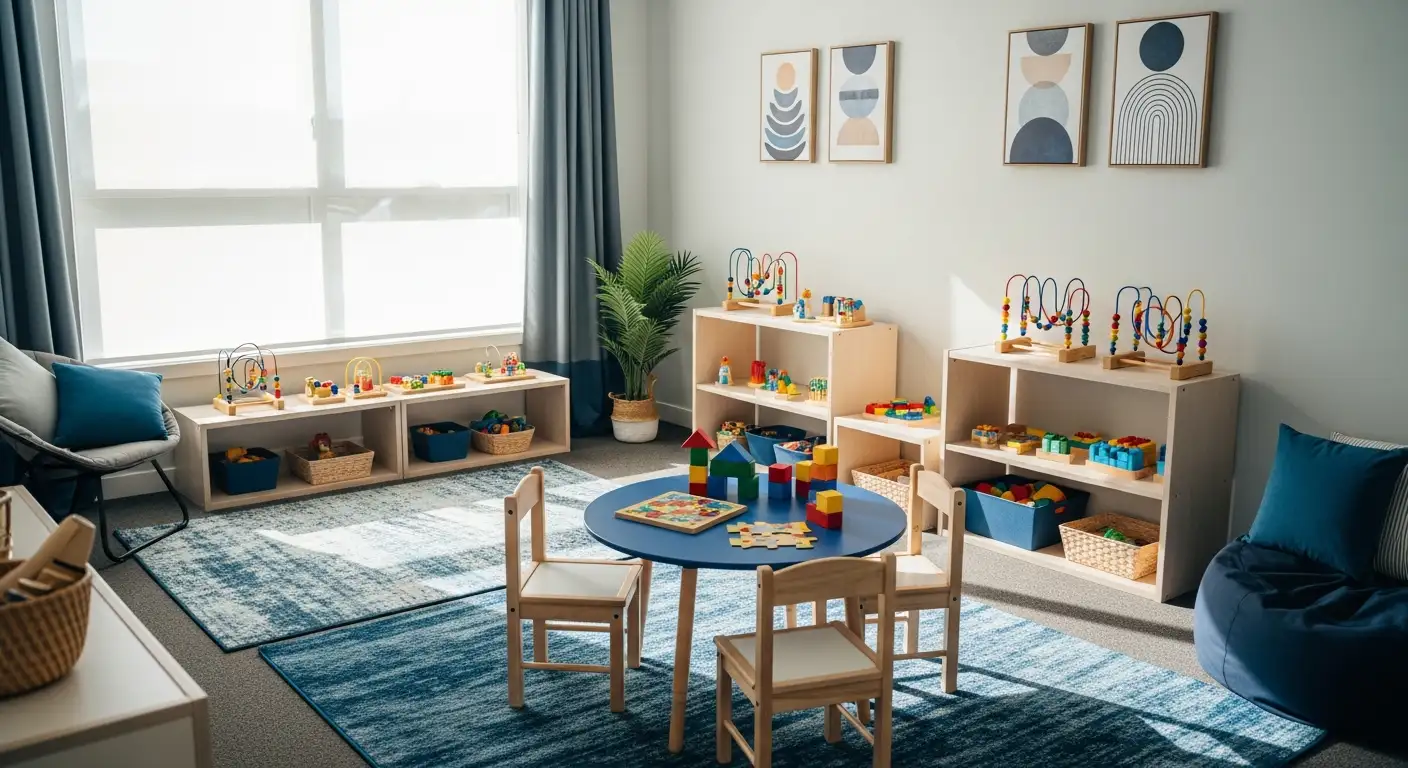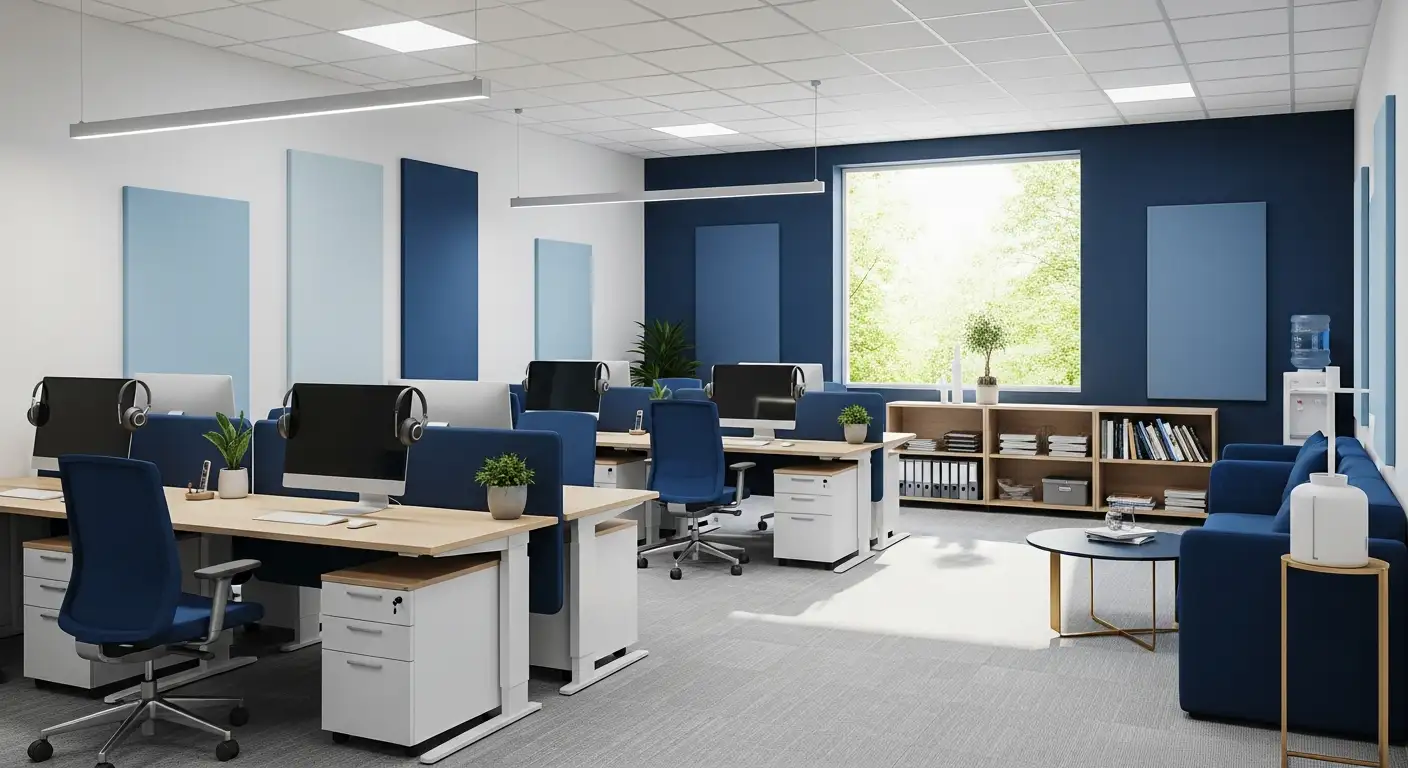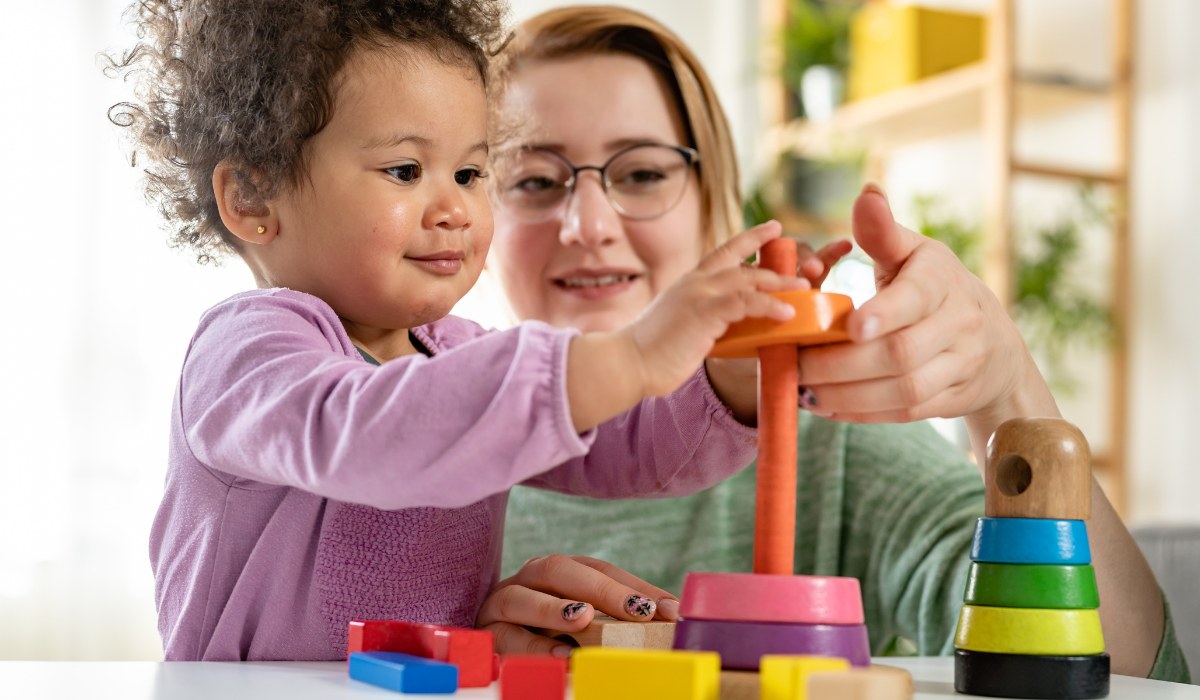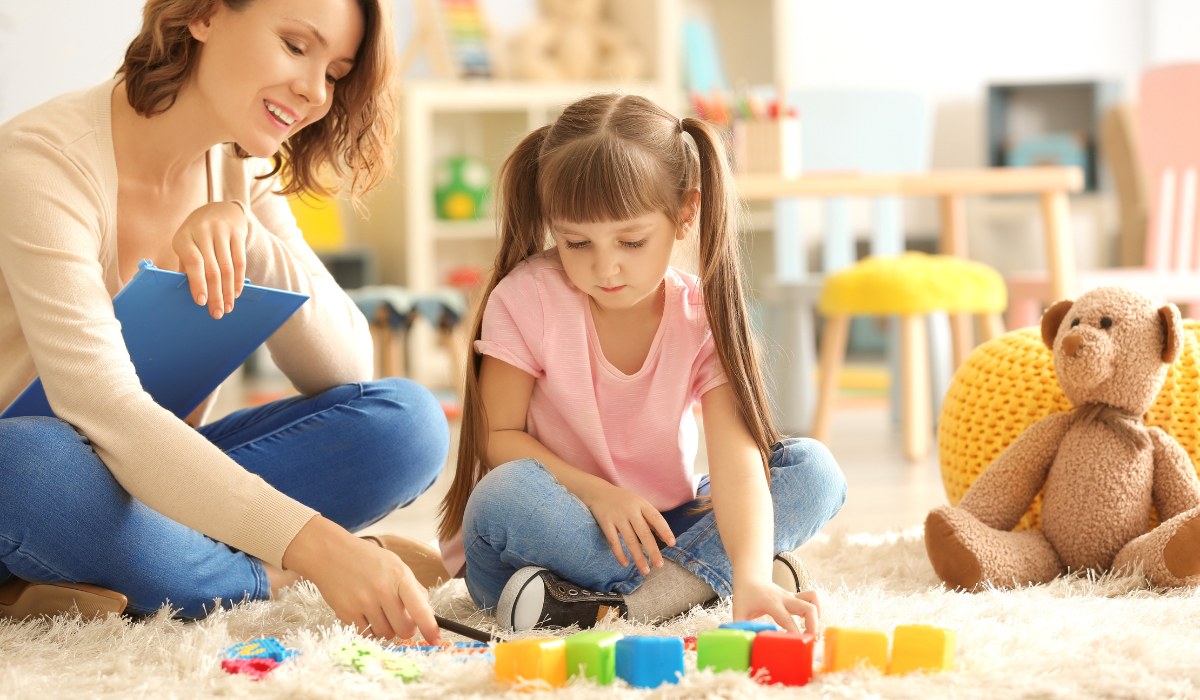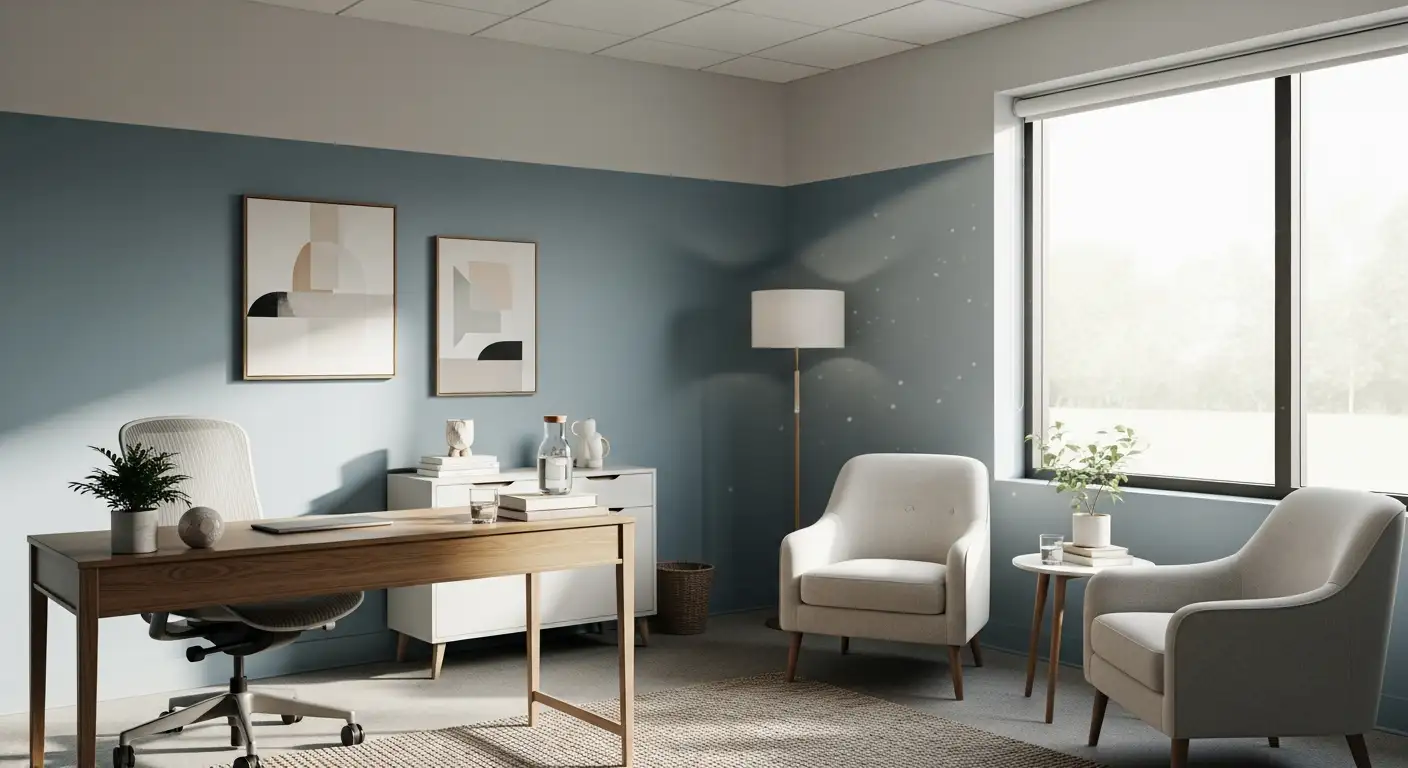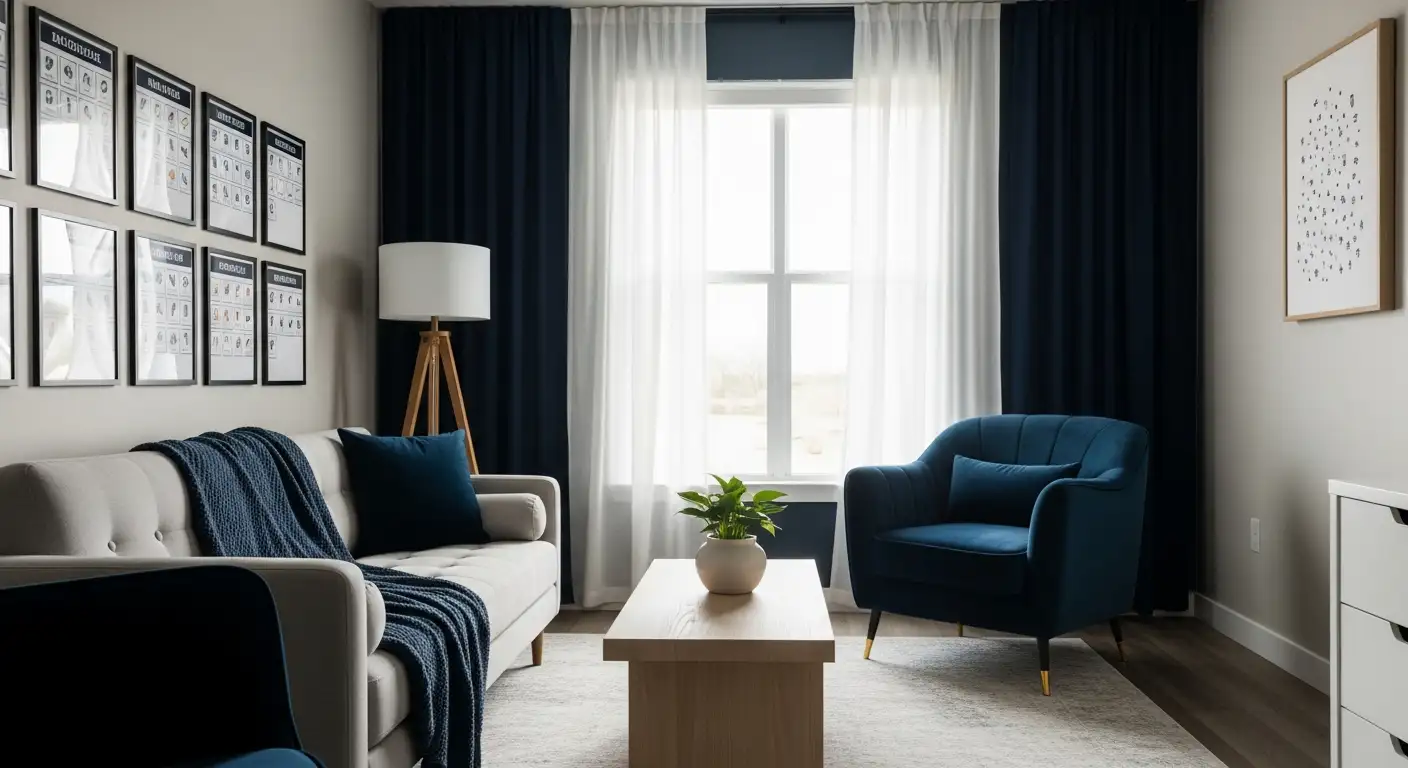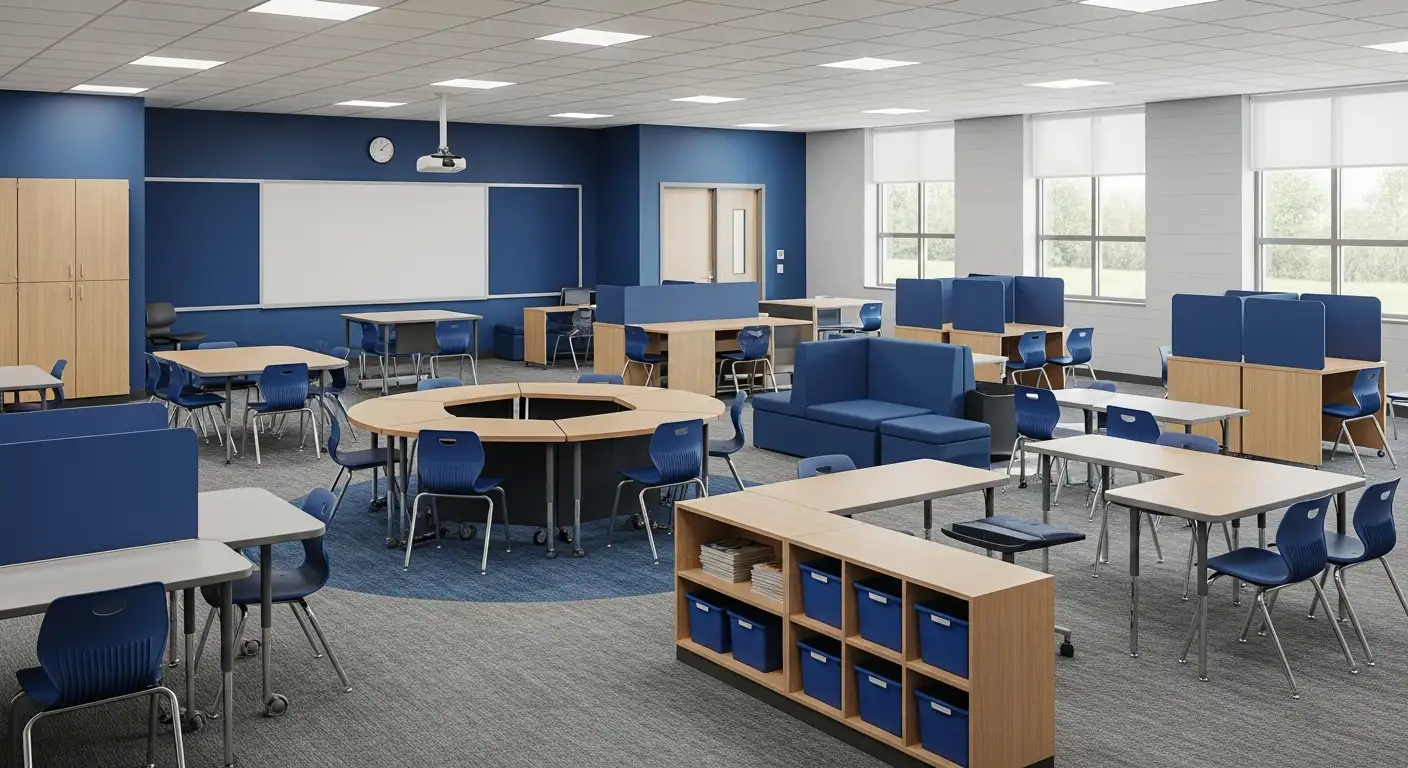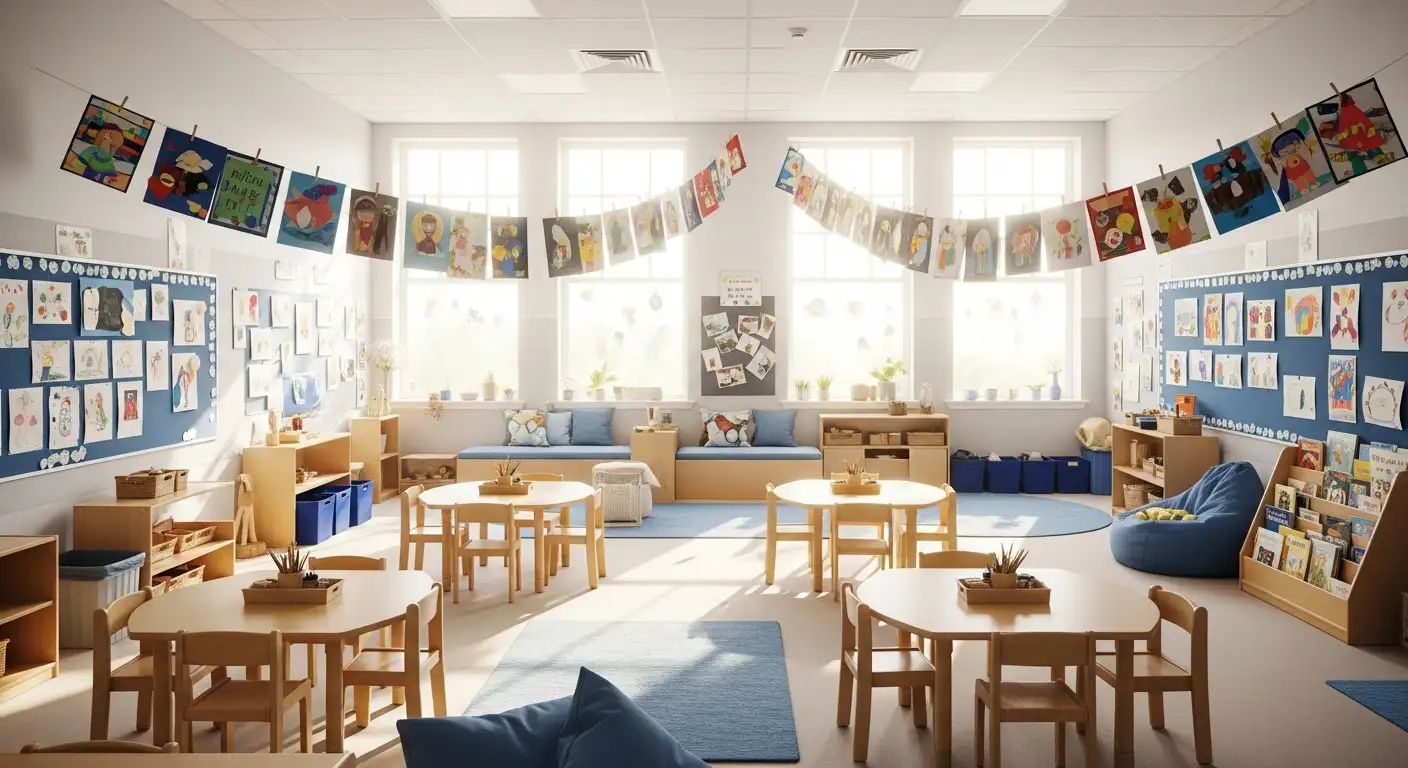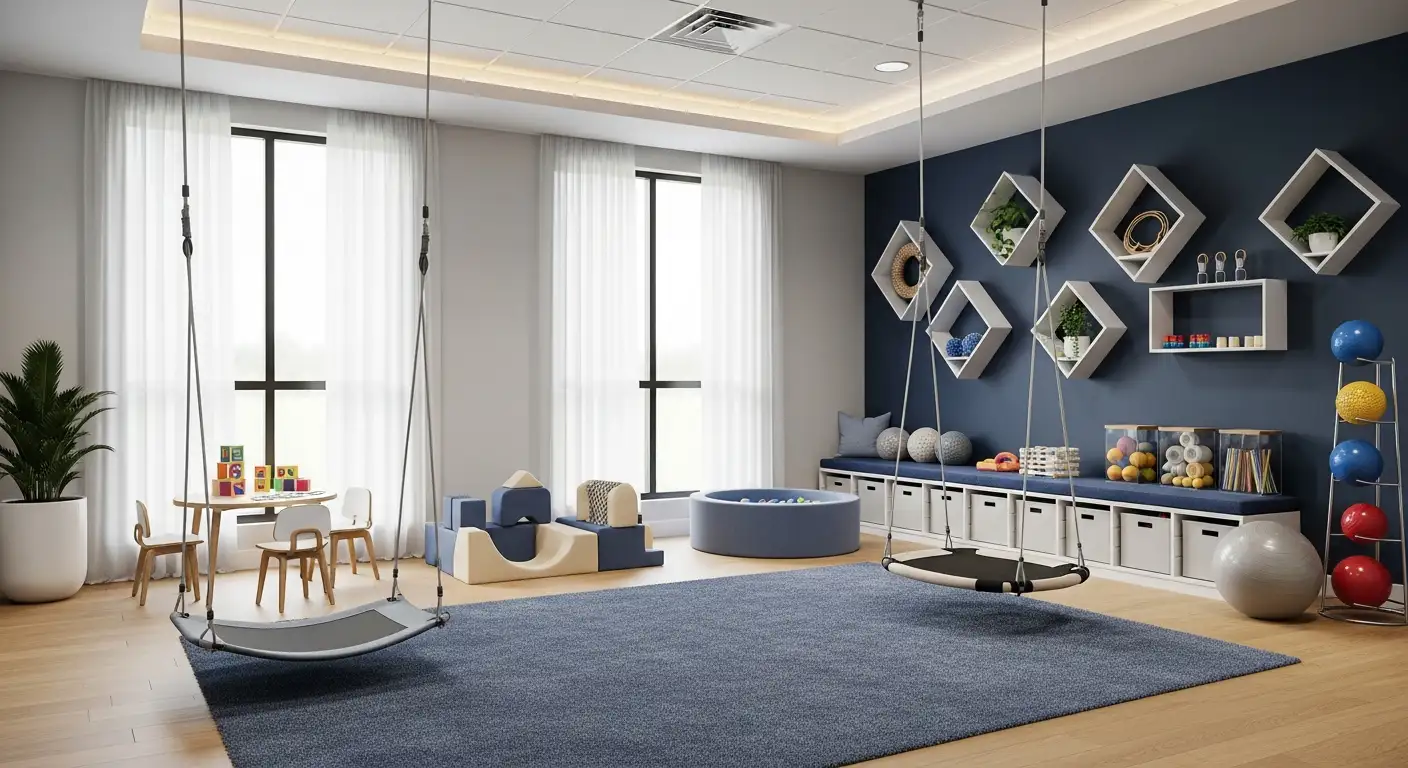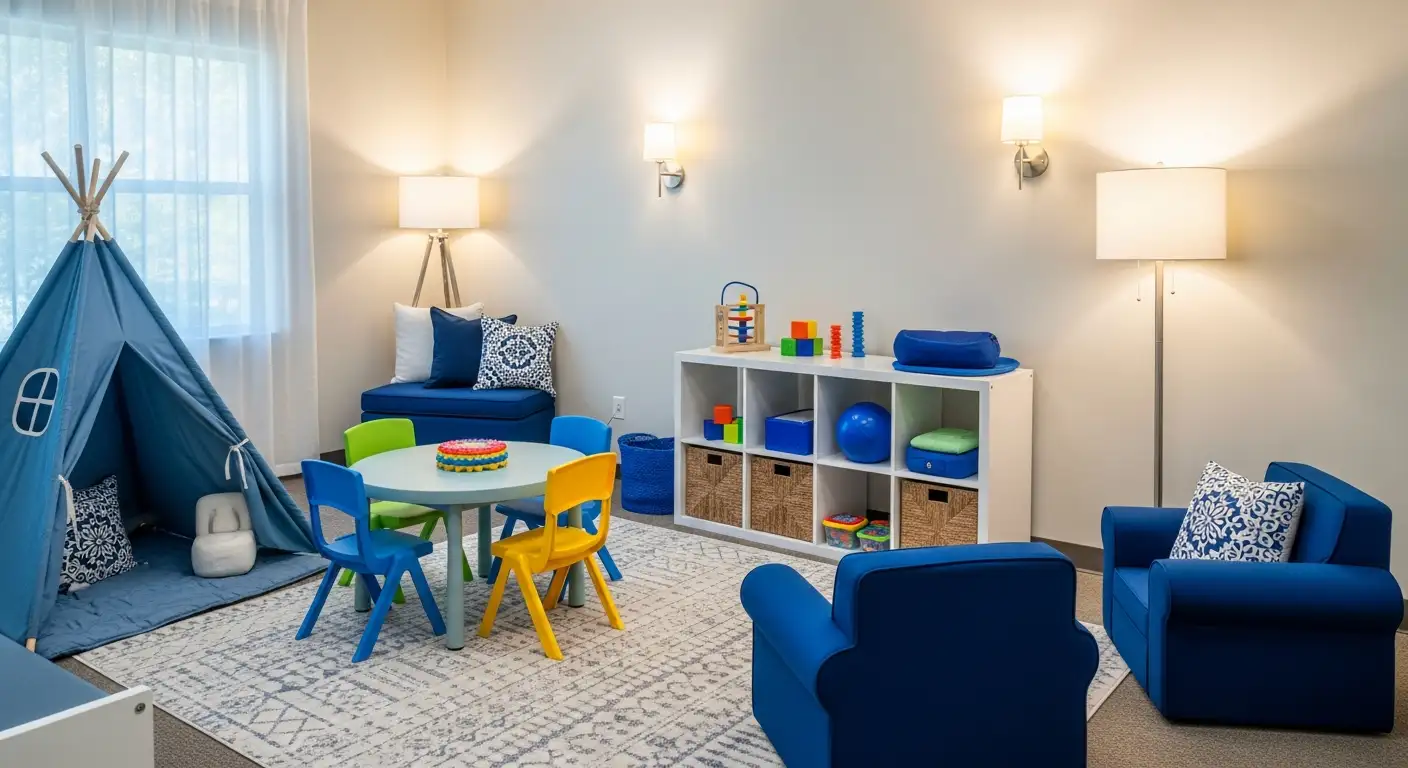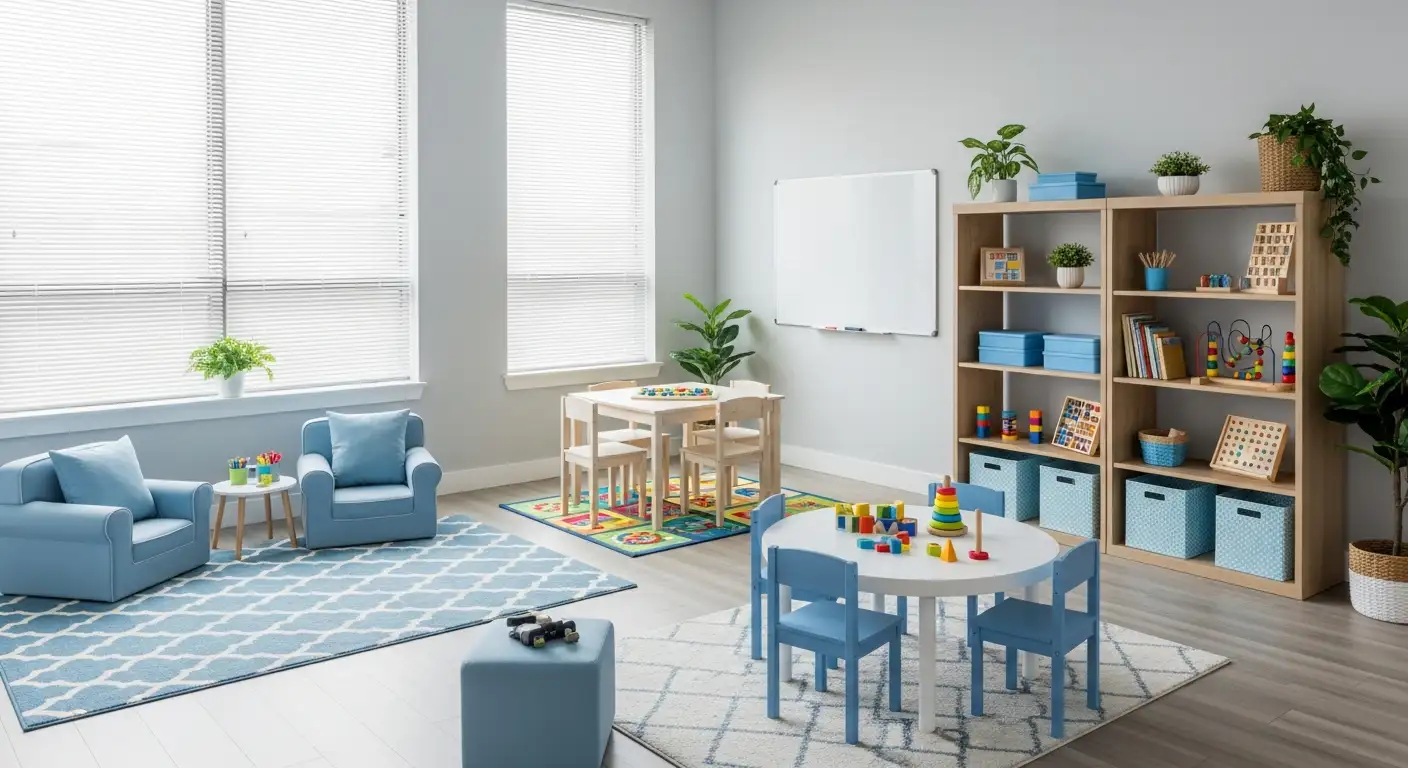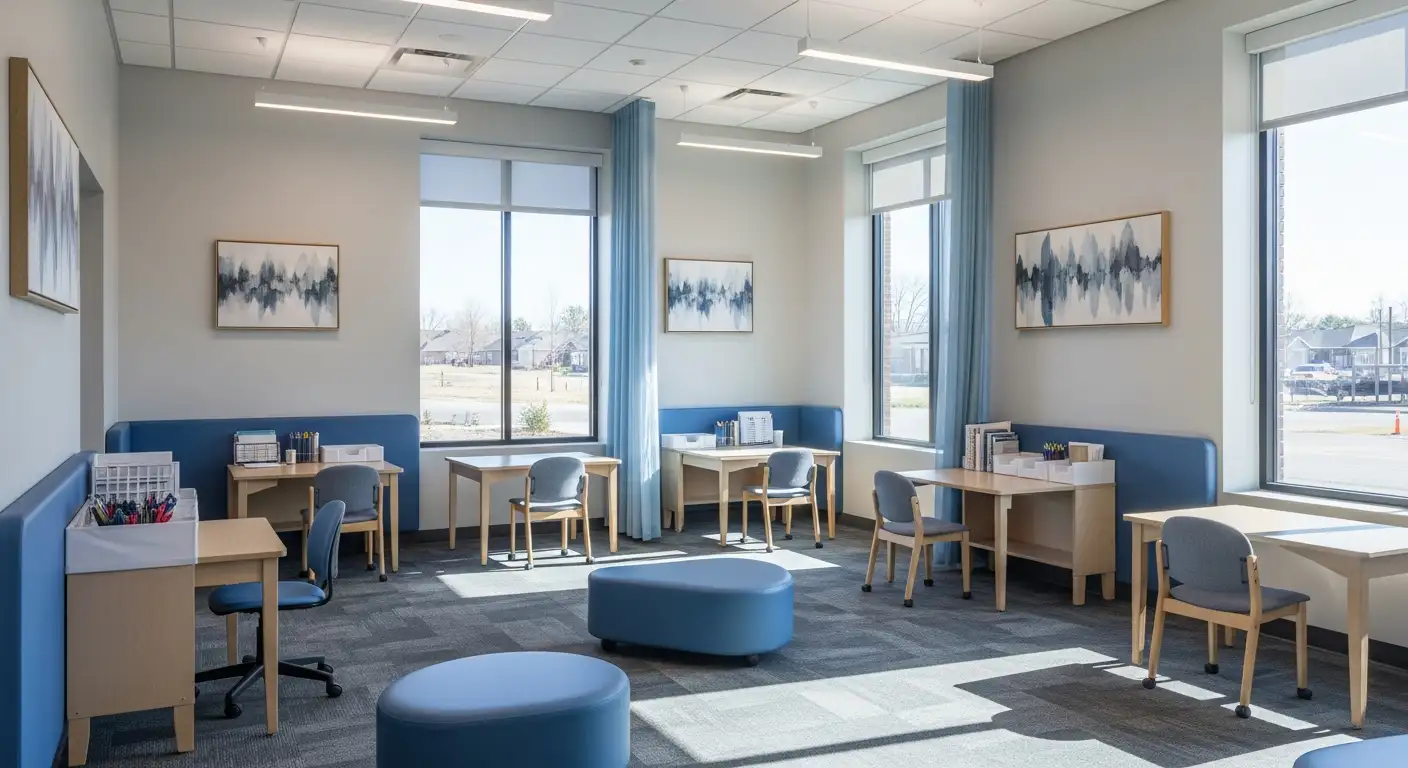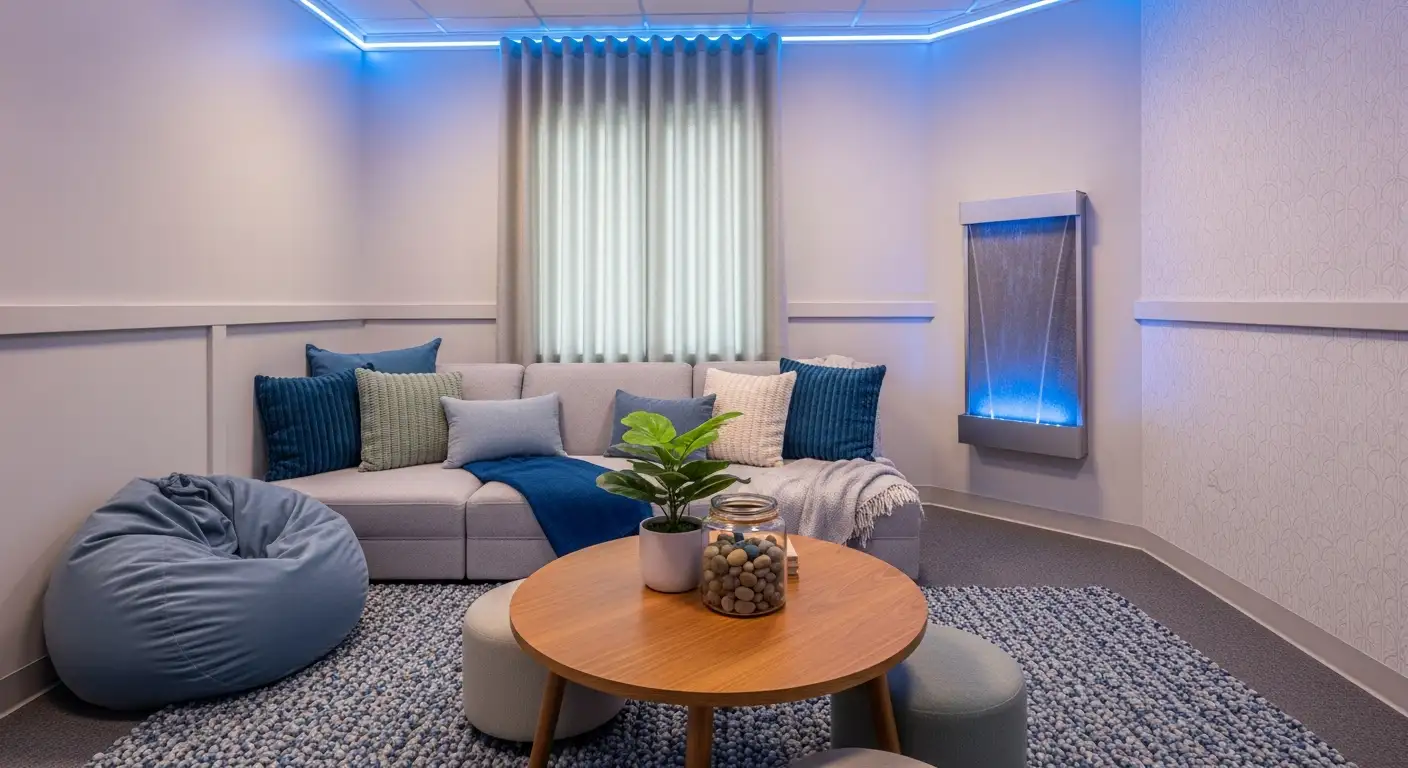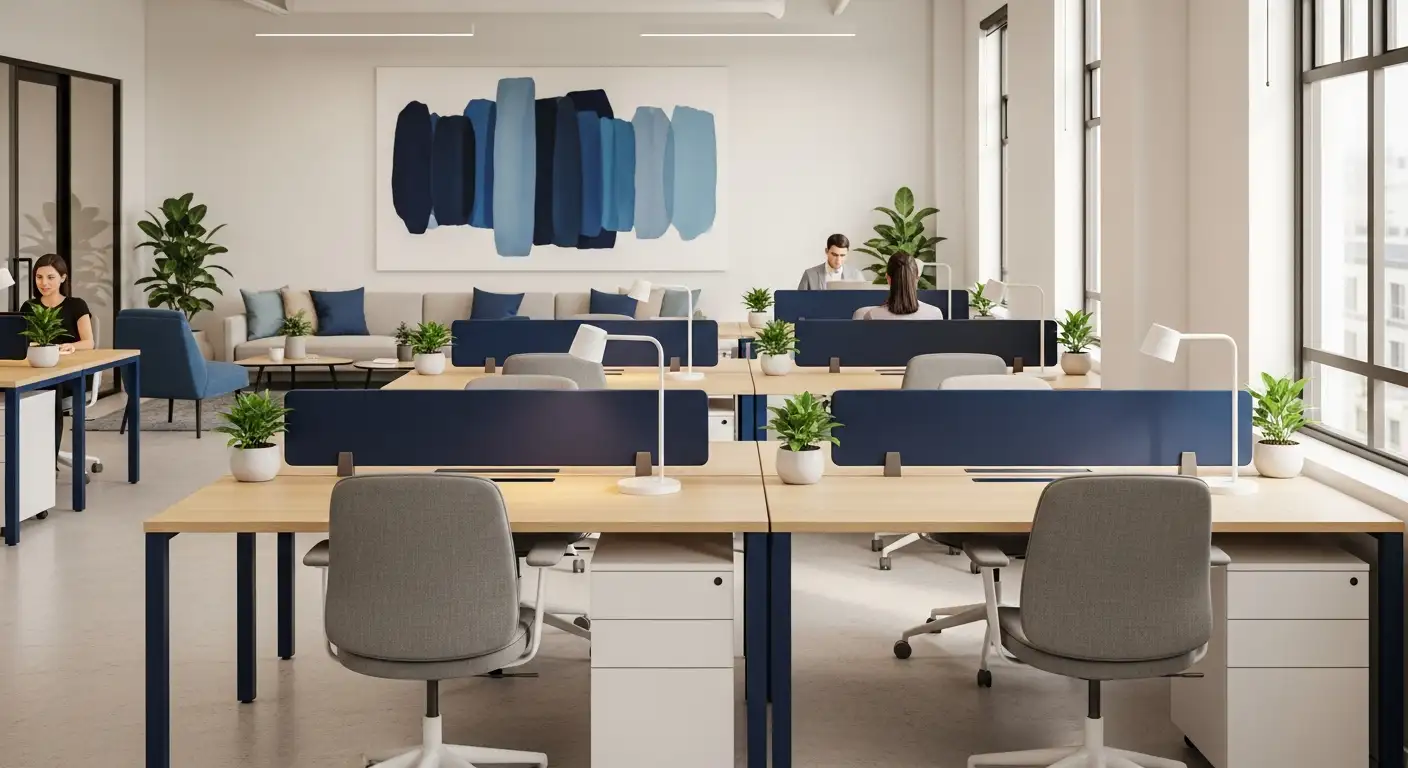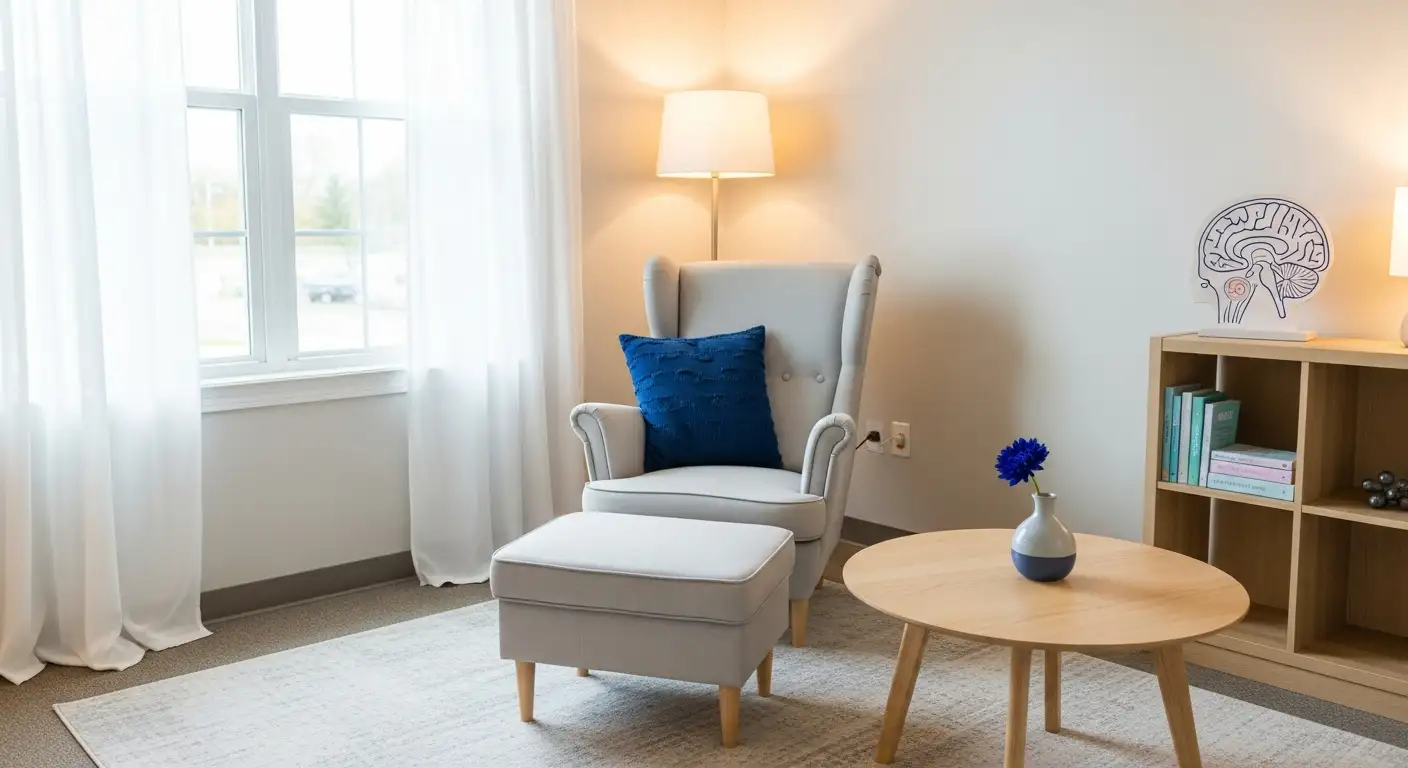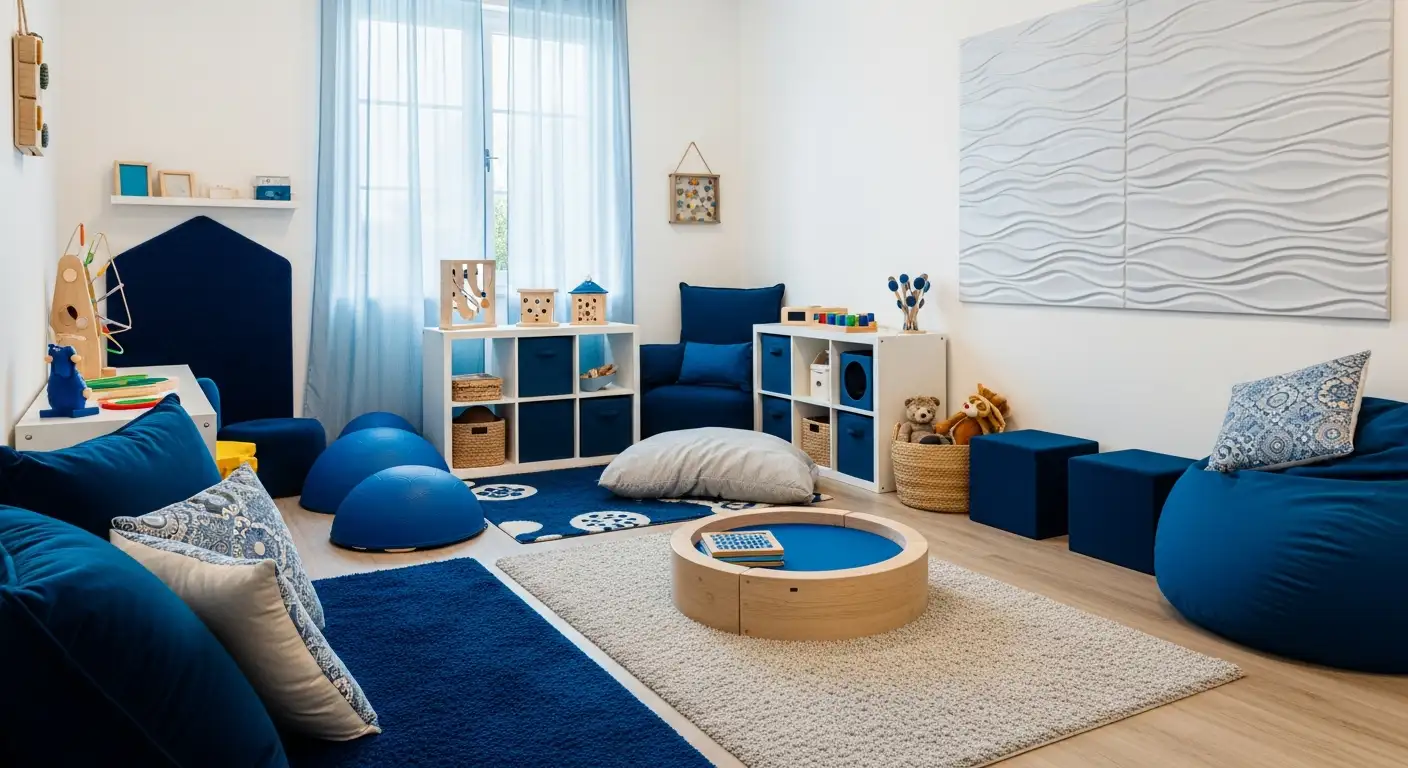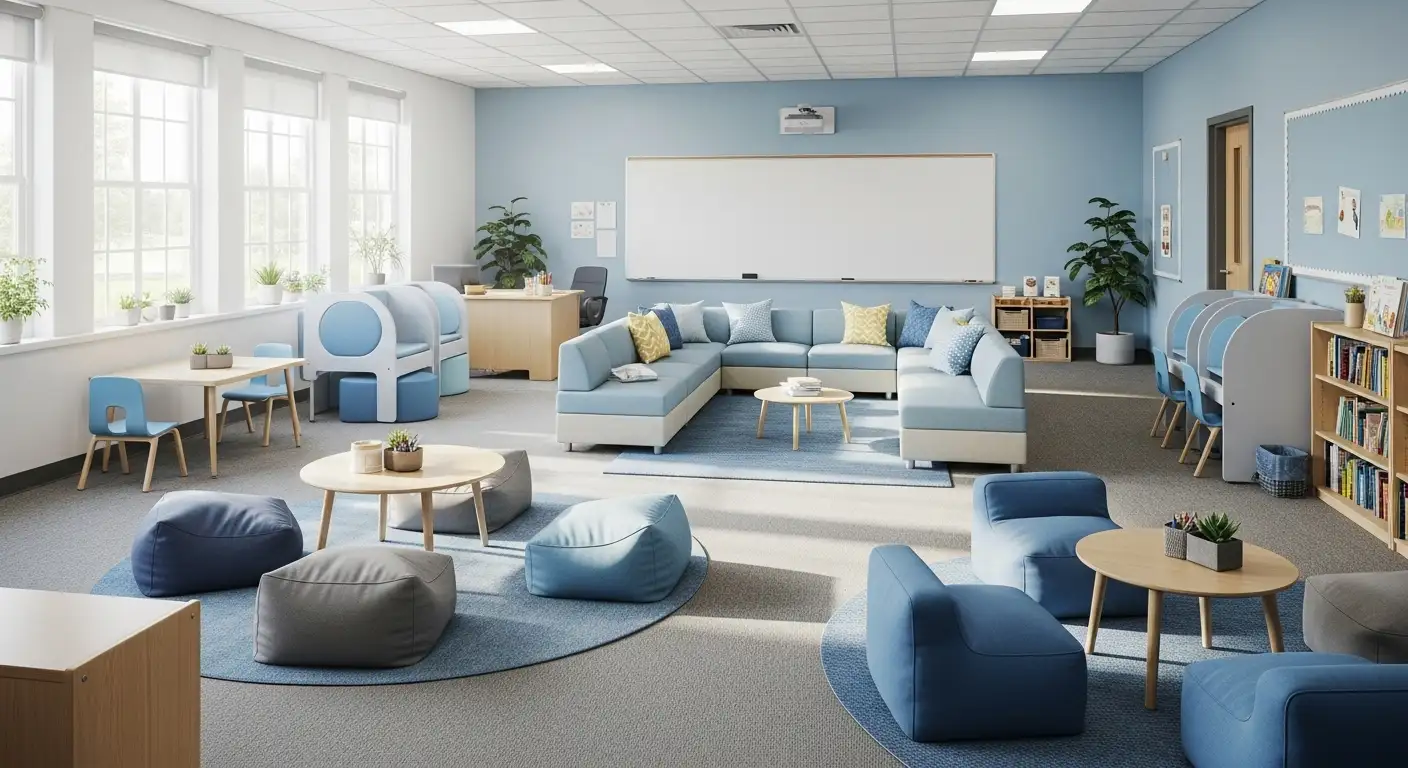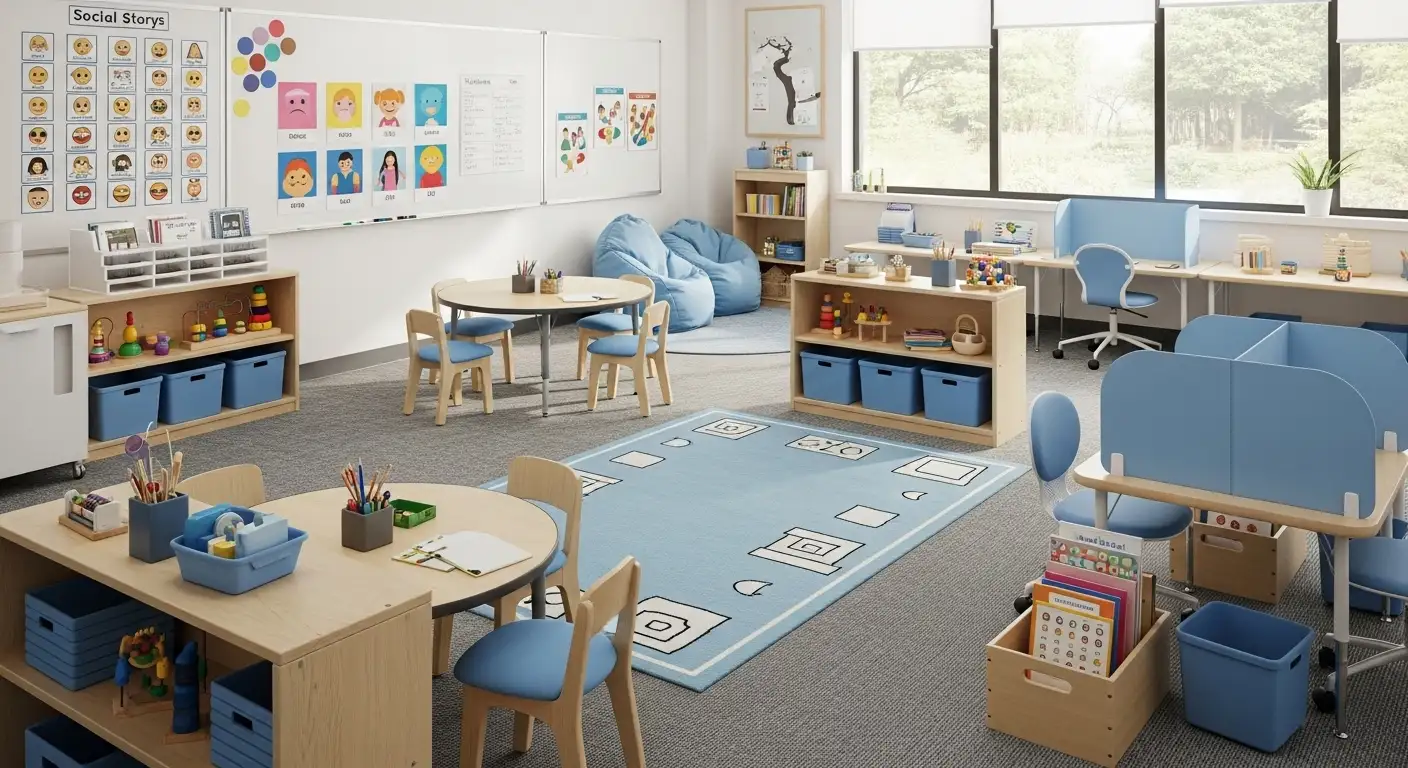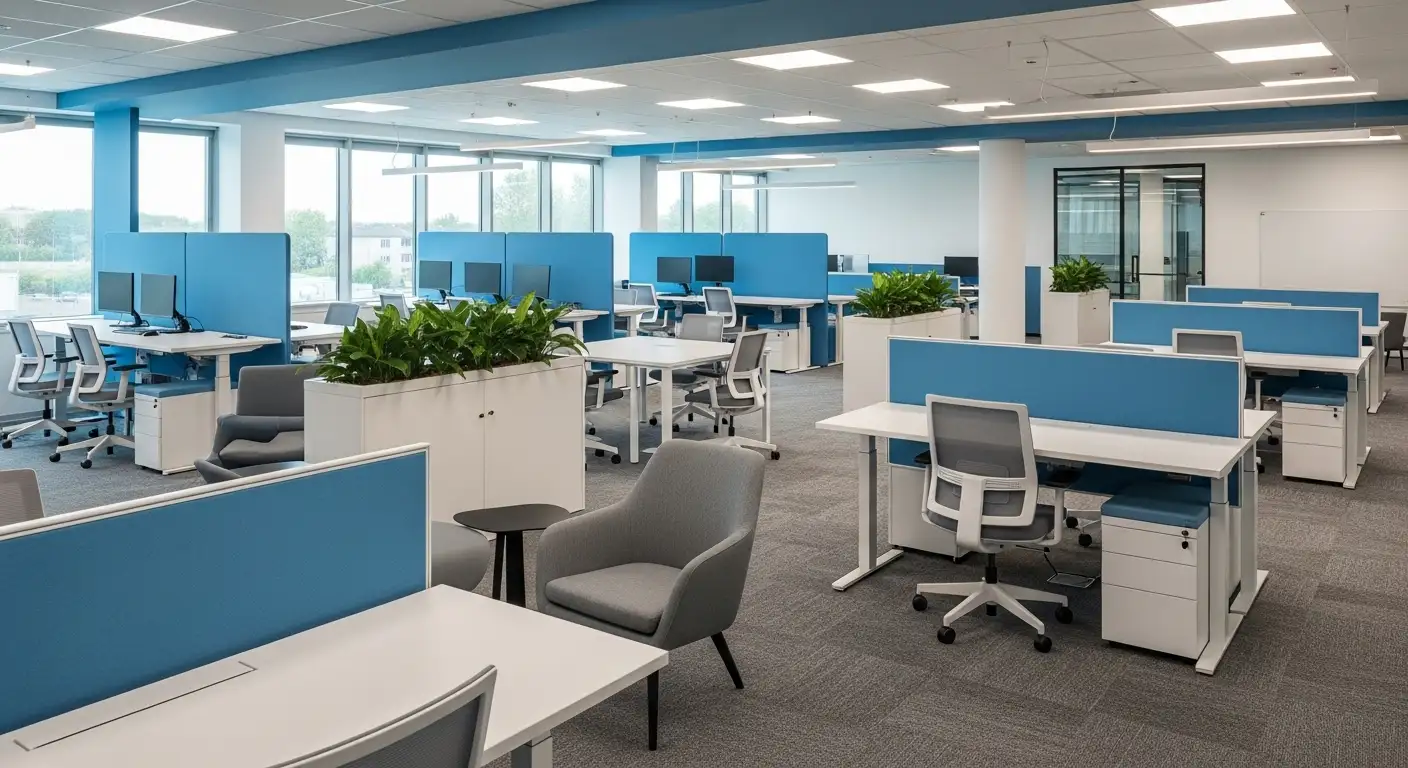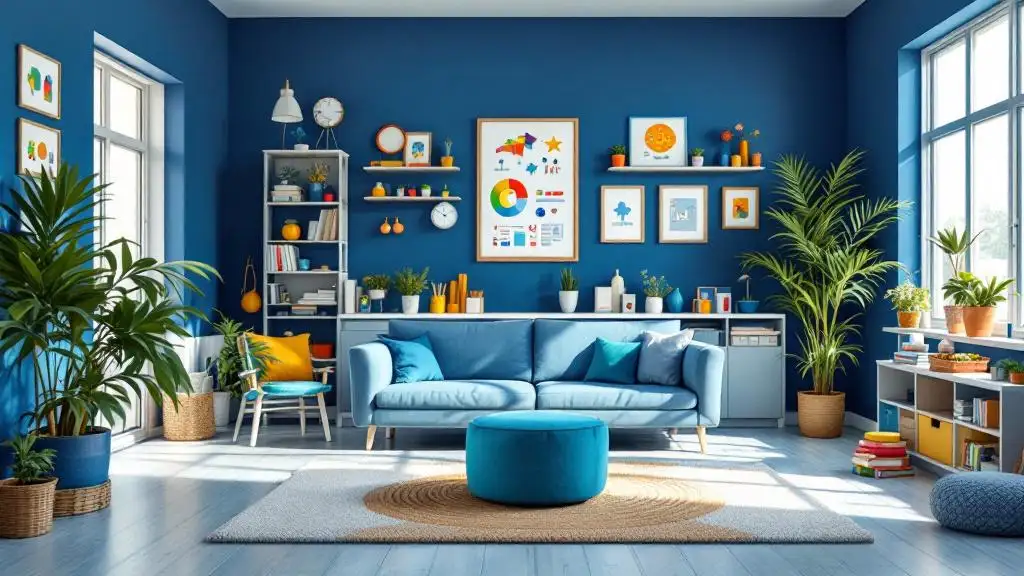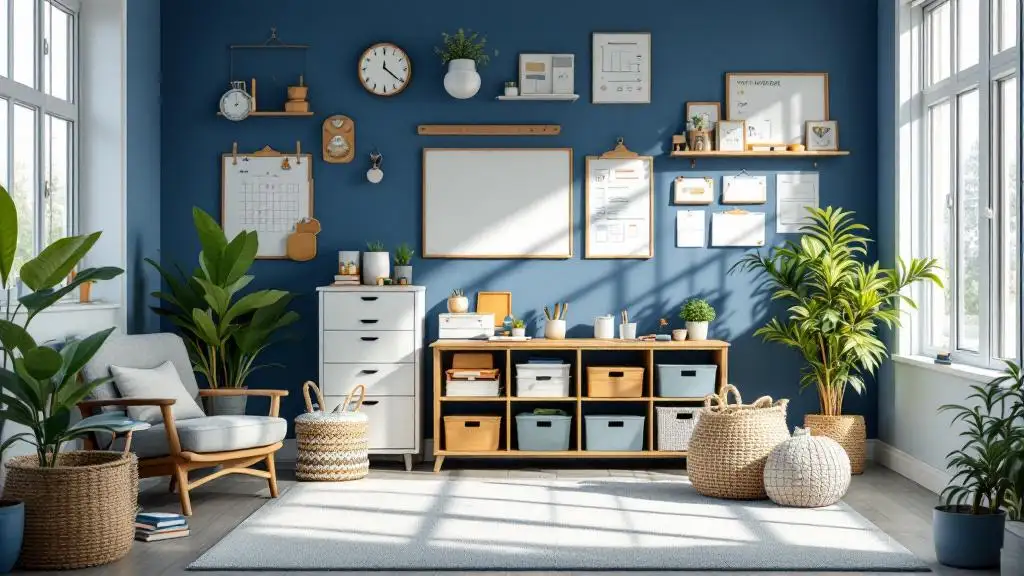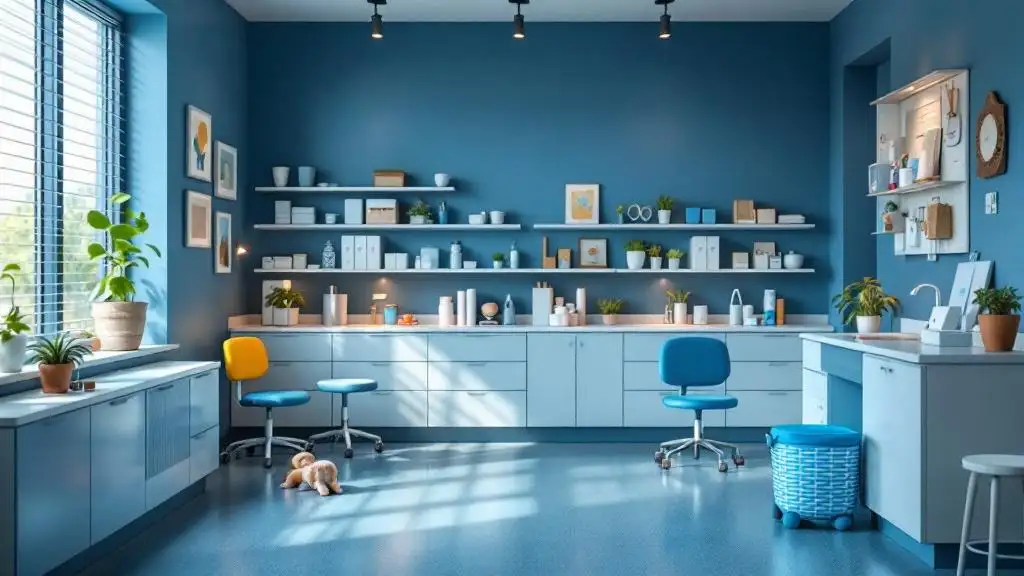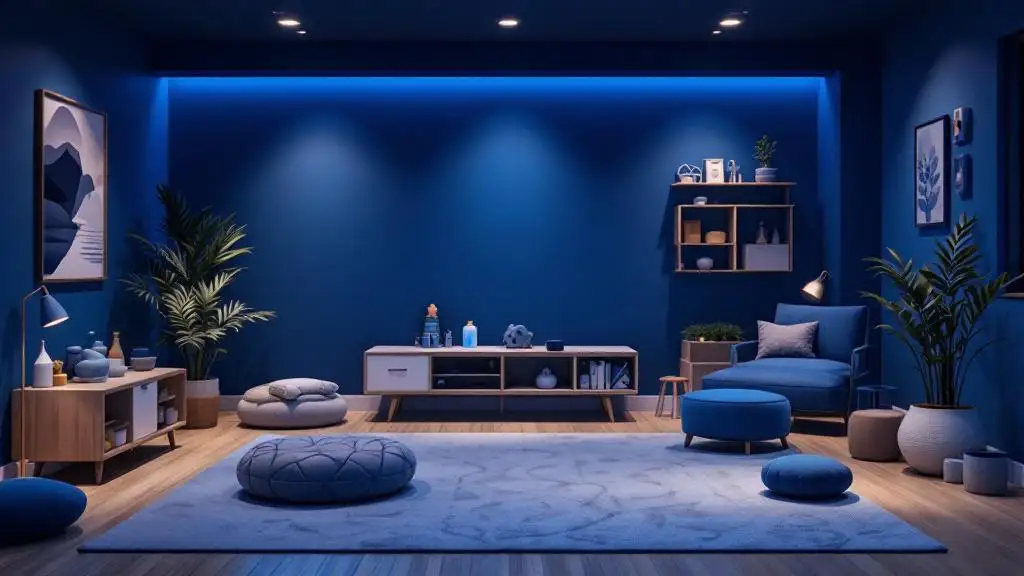How to Create Sensory-Friendly Learning Environments
Designing Classrooms That Embrace Sensory Needs for Students with Autism

Understanding Sensory-Friendly Learning Environments
Creating supportive classroom spaces is essential for students with sensory processing challenges, particularly those on the autism spectrum. Sensory-friendly learning environments are thoughtfully designed to minimize sensory overload while promoting engagement and comfort. This article explores key strategies and accommodations to craft such environments, integrating therapeutic approaches like Applied Behavior Analysis (ABA) to optimize learning outcomes.
What is Applied Behavior Analysis (ABA) Therapy and Its Role in Autism Treatment?
What is Applied Behavior Analysis (ABA) therapy and how is it used to treat autism?
Applied Behavior Analysis (ABA) therapy is a scientifically grounded approach that helps individuals with autism improve their communication, social skills, and behaviors. At its core, ABA uses an understanding of behavior principles—such as reinforcement—to encourage positive actions and reduce challenging behaviors.
ABA programs are carefully tailored to each person's needs by certified behavior analysts. These specialized interventions can take place in homes, schools, or community settings, making treatment flexible and accessible.
Various techniques fall under the ABA umbrella. Structured methods like Discrete Trial Training (DTT) involve breaking skills down into small steps with repeated practice. Meanwhile, naturalistic methods like Pivotal Response Treatment (PRT) and the Early Start Denver Model (ESDM) emphasize learning through play and everyday routines.
Research consistently demonstrates that ABA is effective in helping children with autism develop critical life skills. Many families and professionals consider ABA therapy a cornerstone of autism interventions due to its strong evidence base and individualized approach.
Who Provides ABA Therapy and Their Qualifications

Who provides ABA therapy and what qualifications do they have?
ABA therapy is delivered by a range of qualified professionals dedicated to applying behavior analysis principles effectively. The primary providers are Board Certified Behavior Analysts (BCBAs). BCBAs must hold a master's degree in behavior analysis or a related field, complete extensive supervised graduate coursework and fieldwork, and pass a rigorous certification exam. Their training equips them with expertise to design individualized treatment plans tailored to each student's unique needs.
Supporting BCBAs are Registered Behavior Technicians (RBTs) and other behavior therapists. RBTs receive specialized training in behavioral techniques and operate under the supervision of a BCBA. They are essential for implementing daily therapy interventions and helping monitor progress.
ABA therapy is offered across diverse environments including clinics, schools, and private practice settings. In every setting, the structured guidance of BCBAs ensures that therapy is data-driven and evidence-based, utilizing strategies such as positive reinforcement to promote skill acquisition and behavior change.
Supervision and family involvement play a crucial role throughout the therapy process. Regular oversight guarantees that interventions remain appropriate and effective, while family participation helps reinforce progress outside therapy sessions, fostering generalization of skills.
Together, these professionals create a comprehensive support system that maximizes the benefits of ABA therapy for individuals requiring behavioral intervention.
Benefits of ABA Therapy for Students with Autism
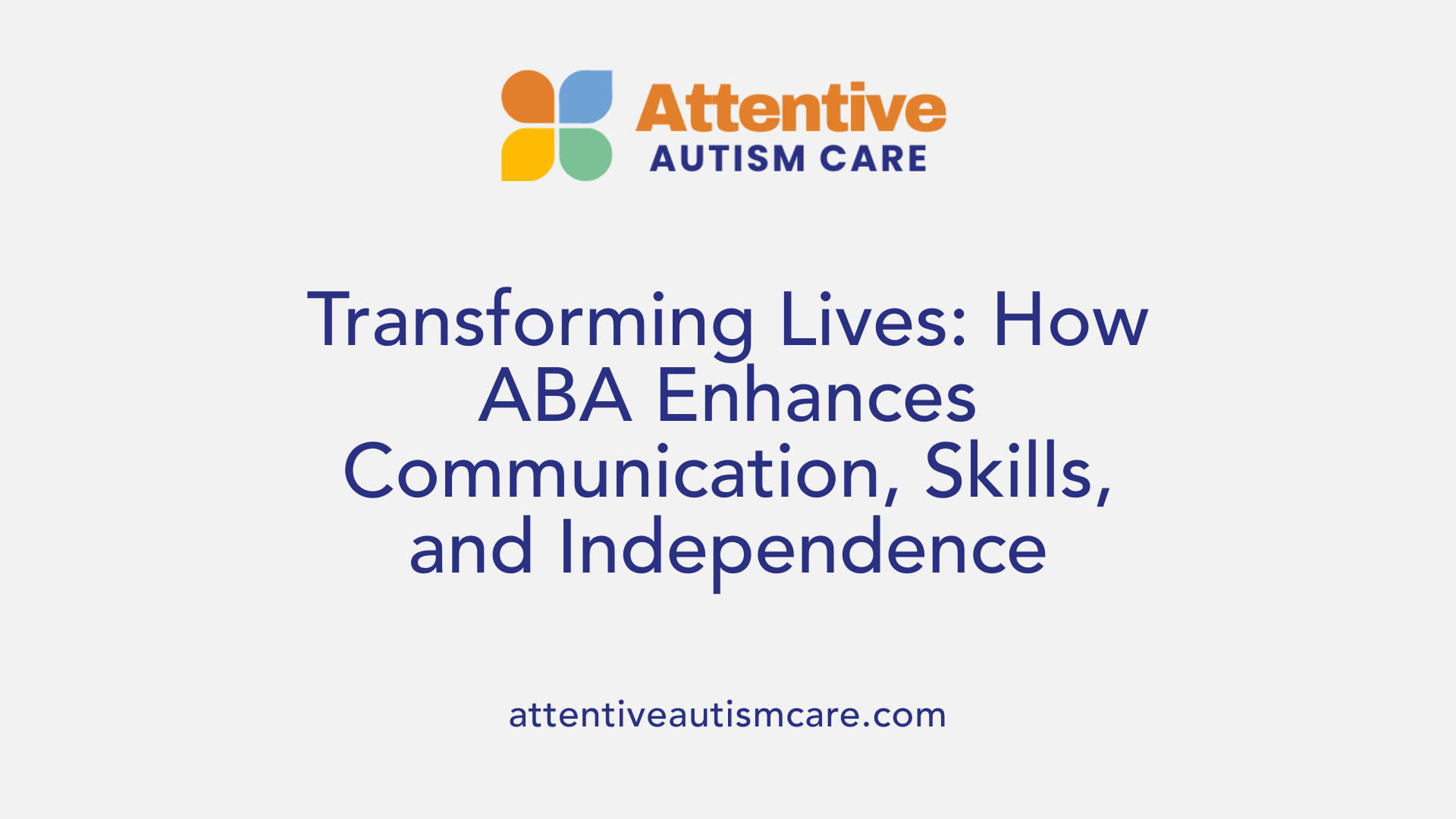
How does ABA therapy benefit individuals with autism?
Applied Behavior Analysis (ABA) therapy offers substantial benefits for students with autism by focusing on the development of positive behaviors while minimizing challenges. The therapy employs evidence-based techniques tailored to each child, ensuring personalized intervention plans that meet unique needs.
One of the significant advantages of ABA is the enhancement of communication and social skills. Through structured teaching and positive reinforcement, children learn to interact more effectively with others, fostering better social integration.
ABA also emphasizes skill acquisition and independence. It helps students develop practical life skills, such as self-care and academic abilities, which contribute to greater autonomy in daily living.
Early intervention is another crucial benefit. When ABA therapy begins at a young age, it can lead to meaningful developmental gains, supporting improved attention, memory, and language skills that form a foundation for lifelong learning.
Overall, ABA therapy's focus on improving functional skills and adaptive behaviors enhances the quality of life for individuals with autism, enabling them to participate more fully in social and educational settings.
Typical ABA Therapy Process and Its Integration in Schools
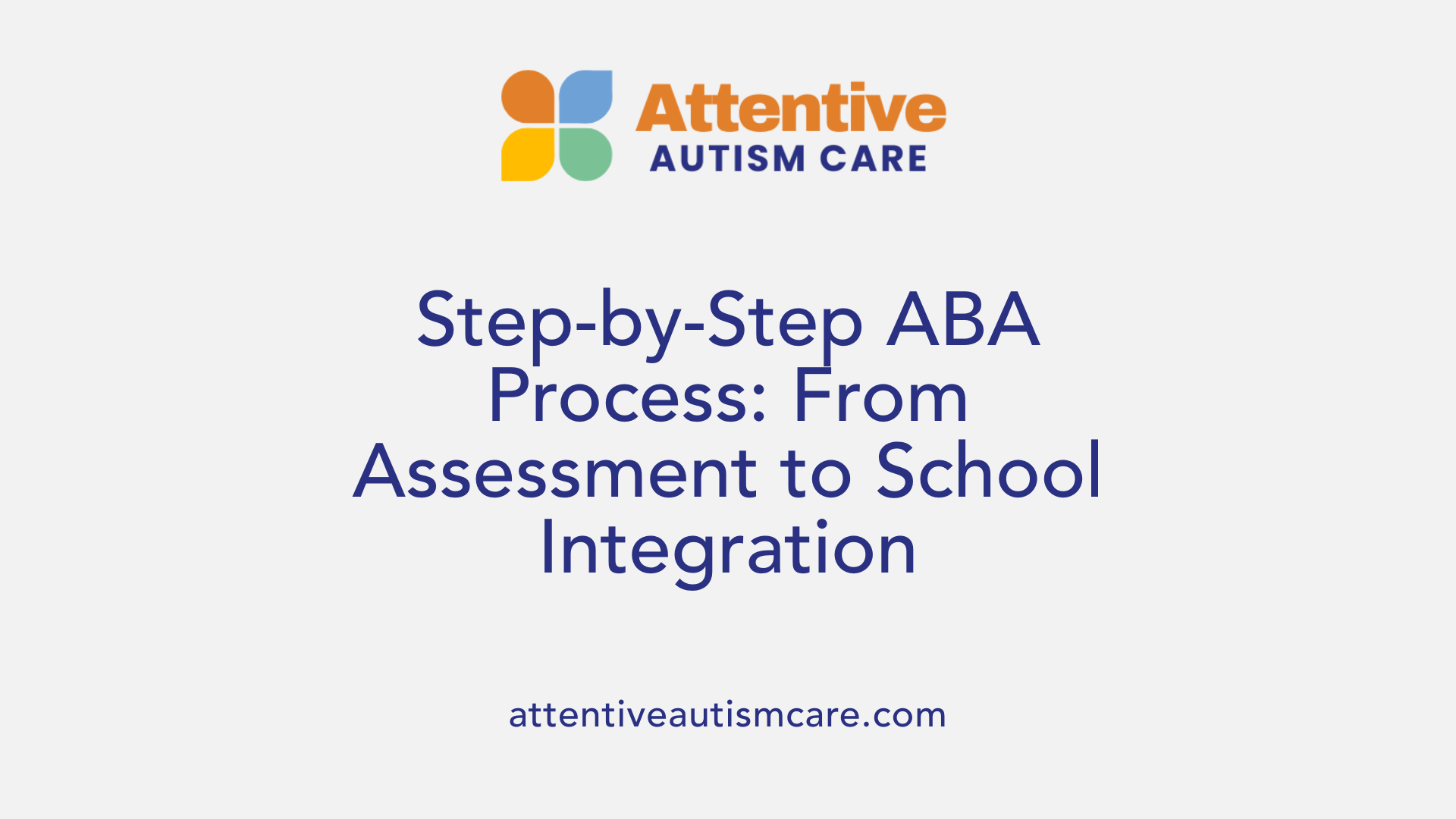
What is the typical process involved in ABA therapy?
ABA therapy starts with a thorough assessment by a Board Certified Behavior Analyst (BCBA). This includes interviews with the student and caregivers, behavioral observations, and standardized tests. The goal is to understand the student’s strengths, challenges, and current skills.
From this assessment, an individualized treatment plan is crafted. This plan includes clear, measurable goals tailored to areas such as communication, social skills, and daily living skills. The plan ensures therapy is purposeful and focused on the student’s unique needs.
Therapy sessions use evidence-based methods like positive reinforcement, discrete trial training (DTT), modeling, and natural environment teaching. These approaches help teach and reinforce desired behaviors in structured and natural settings.
Data collection is fundamental during therapy. Progress is continuously tracked, and the treatment plan is regularly reviewed and adjusted based on the student’s response. This keeps therapy dynamic and effective.
Family training and collaboration are essential. Parents and caregivers learn strategies to support the student’s development outside therapy sessions, promoting consistency and generalization of skills.
How is ABA therapy integrated into schools?
In educational settings, ABA therapy is integrated to complement classroom instruction and support students’ learning and behavior needs. Individualized treatment plans align with educational goals, and therapy can be delivered in various school environments—from classrooms to specialized therapy rooms.
Collaboration between educators and therapists ensures strategies are reinforced throughout the school day. Progress data informs instructional decisions, and adjustments are made to support academic and social success.
Overall, ABA therapy’s structured process, combined with ongoing data analysis and family collaboration, creates a responsive framework that supports students effectively in their school environment.
Environmental Modifications for Sensory-Friendly Classrooms
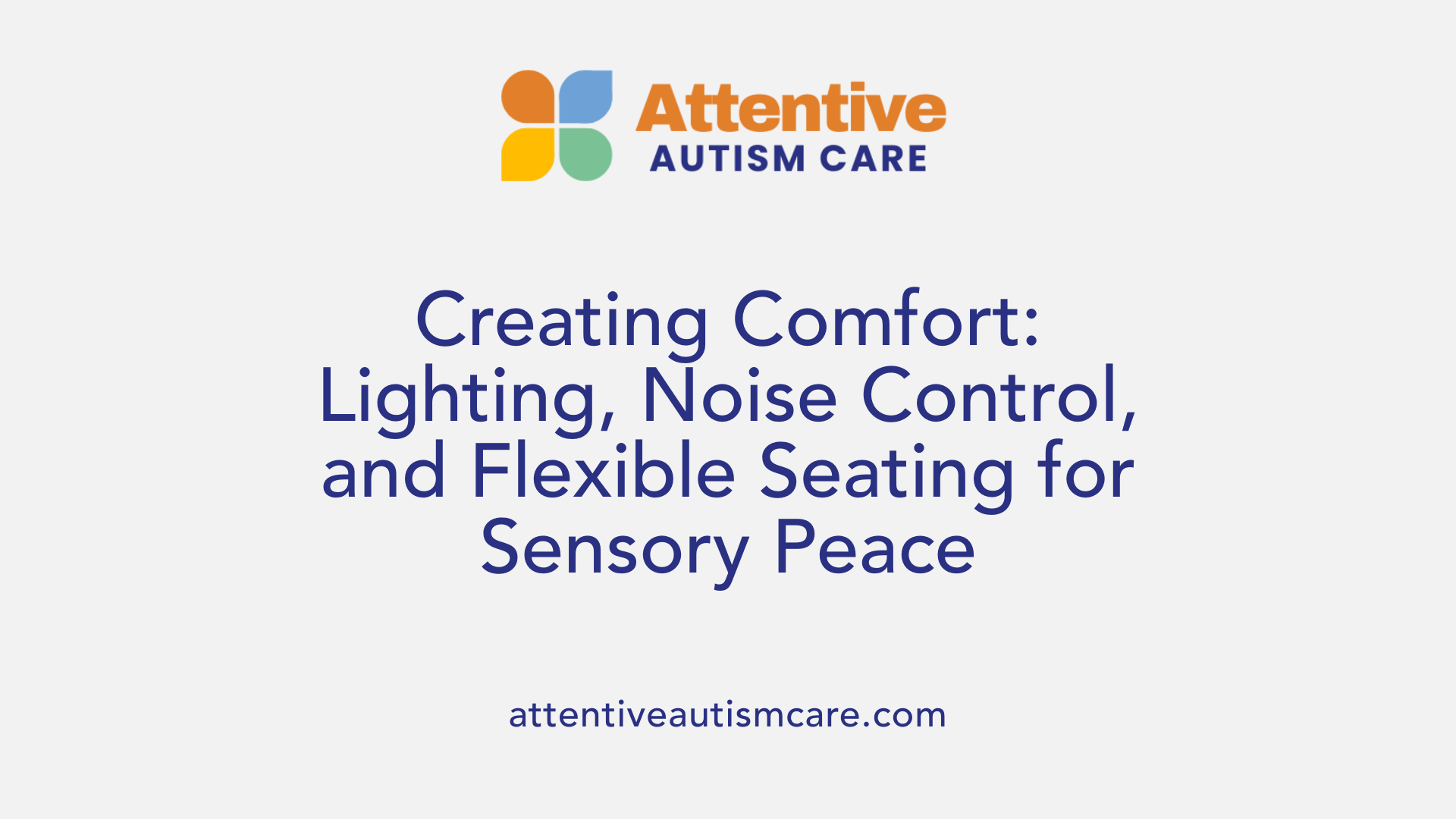
How can controlled lighting options improve sensory-friendly classrooms?
Regulated lighting plays a vital role in creating a comfortable environment for sensory-sensitive students. Using dimmable lights and adjustable blinds helps reduce glare and harsh brightness, which benefits students like Jermaine who are prone to headaches and eye strain due to light sensitivity.
What noise management strategies support students with sensory processing challenges?
Managing auditory stimuli is essential to maintain focus and calmness. Noise-canceling headphones, quiet spaces, and sound-absorbing materials are effective tools. These adaptations make a significant difference for students like Corey, who struggles with noise sensitivity, by minimizing disruptive sounds.
How do quiet spaces enhance the classroom experience?
Designated quiet areas offer students a refuge to retreat when overwhelmed by sensory input. These spaces provide calm and reduce stress, enabling students to self-regulate and return to tasks more prepared. Quiet spaces are an important part of a sensory-friendly classroom setup.
Why are sound-absorbing materials important in these classrooms?
Materials that absorb sound, such as acoustic panels or carpets, reduce the overall noise level. This creates a more controlled auditory environment that helps prevent sensory overload in sensitive students by softening background noise.
What role do flexible seating arrangements play in sensory-friendly classrooms?
Flexible seating options like bean bag chairs, wobble cushions, and standing desks cater to students needing movement and tactile input to maintain focus. For example, students like Zaria benefit from these choices because they support different sensory needs and learning styles, making classroom participation easier.
| Environmental Modification | Description | Benefit for Students |
|---|---|---|
| Controlled Lighting | Dimmable lights and adjustable blinds | Reduces light sensitivity and eye strain |
| Noise Management | Noise-canceling headphones, quiet spaces | Minimizes auditory distractions and overload |
| Quiet Spaces | Designated calm areas | Helps students self-regulate sensory input |
| Sound-Absorbing Materials | Acoustic panels, carpets | Lowers background noise levels |
| Flexible Seating Arrangements | Bean bag chairs, wobble cushions, standing desks | Supports movement and sensory input needs |
Incorporating Sensory Tools and Stations to Support Students

What individualized sensory tools help students manage sensory overload?
Individualized sensory tools play a crucial role in helping students handle sensory overload and maintain focus. Tools such as noise-canceling headphones allow students sensitive to sound to block out distracting noises. Visual timers help students understand the passage of time and prepare for transitions, reducing anxiety. These personalized resources empower students like Evelyn to engage more effectively in classroom activities.
How do sensory stations and exploration activities benefit learning?
Sensory stations offer dedicated areas where students can engage in tactile and auditory learning through hands-on activities. Incorporating textured objects, such as fabrics or squishy materials, lets students explore different sensations that reinforce sensory integration. Musical instruments at these stations support auditory exploration and help students develop focus and motor skills while enjoying the learning process.
What types of tactile materials and musical instruments are commonly used?
Textured objects like stress balls, sandpaper sheets, and foam shapes provide rich tactile feedback. Musical instruments might include hand drums, maracas, or xylophones, which encourage rhythm practice and auditory stimulation. These materials make sensory stations vibrant and interactive, catering to a range of sensory preferences.
Why are these tools and stations important in sensory-friendly classrooms?
Incorporating sensory tools and stations creates an inclusive environment that recognizes diverse sensory needs. They support students' self-regulation and increase engagement by allowing movement and sensory input in structured ways. Overall, sensory-friendly modifications foster better participation and well-being for students with sensory processing challenges.
Flexible Seating Options That Enhance Focus and Comfort

What Types of Flexible Seating Can Be Used?
Flexible seating in sensory-friendly classrooms includes options such as bean bag chairs, wobble cushions, and standing desks. These alternatives offer students choices that better match their sensory processing needs compared to traditional desks and chairs.
How Does Movement and Sensory Input Improve Attention?
Many students with sensory processing difficulties benefit from the ability to move while learning. For example, wobble cushions allow subtle motion which helps increase focus and reduce restlessness. Similarly, standing desks provide opportunities to change posture and engage muscles, aiding concentration.
What Are Examples of Accommodating Different Sensory Needs?
Flexible seating addresses diverse sensory requirements. A student like Zaria may use a bean bag chair to experience calming pressure and comfort, while another student may prefer a standing desk to avoid feeling confined. These options support individual regulation and enhance participation in classroom activities.
By incorporating these seating choices, classrooms become more inclusive and responsive to each learner's sensory preferences, fostering better engagement and comfort throughout the school day.
Lighting Adjustments to Minimize Sensory Sensitivities

How Can Dimmable Lights and Adjustable Blinds Help in the Classroom?
Dimmable lights and adjustable blinds provide crucial control over the classroom's brightness. These tools allow educators to customize lighting levels, reducing harsh glare that can overwhelm sensitive students. For instance, dimmable LED lights can be softened as needed, while adjustable blinds help filter natural sunlight, creating a stable and comfortable visual environment.
Why Is Managing Light Sensitivity and Headaches Important?
Students like Jermaine, who experience headaches and eye strain due to bright or flickering lights, benefit immensely from regulated lighting. By minimizing exposure to excessive brightness or sudden changes in light intensity, the classroom becomes a more supportive space. This mitigates discomfort and distractions, enabling these students to focus better and participate more fully in lessons.
How Can Adaptive Lighting Schemes Be Tailored to Individual Needs?
Creating adaptable lighting means designing a flexible setup that accommodates each student's sensory preferences. For example, some students may work best with soft, indirect lighting, while others might prefer moderate brightness. Teachers can combine dimmable fixtures, blinds, and strategic lamp placement to meet diverse sensory needs. Regular assessment of lighting effectiveness ensures the environment remains supportive as classroom dynamics evolve.
Sensory Breaks and Mindfulness Techniques in Learning Environments
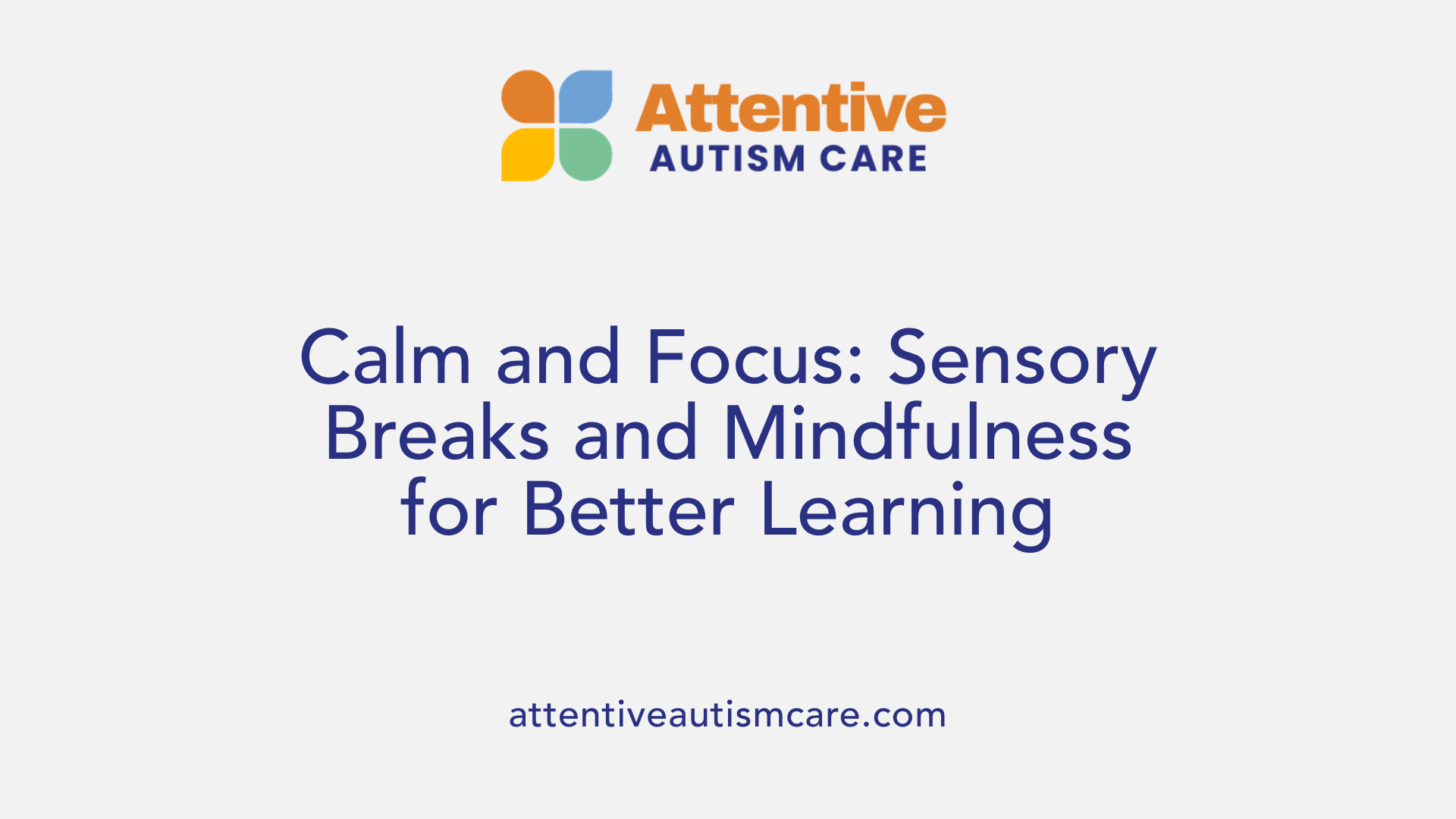
Designating Sensory Breaks During the Day
Integrating sensory breaks into the school day is crucial for students who experience sensory overload or difficulty with transitions. These breaks provide dedicated time away from stimulating activities, allowing students to reset their sensory systems in a controlled manner. A well-planned sensory break is not just a pause but a purposeful interval designed to improve focus and participation when students return to their tasks.
Movement Activities and Breathing Exercises
During sensory breaks, incorporating movement activities such as gentle stretching, walking, or simple yoga poses can help students like Ricky release built-up tension. These physical activities stimulate proprioceptive and vestibular systems, aiding in self-regulation. Additionally, breathing exercises serve as calming tools; deep, mindful breaths reduce anxiety and enhance attention by shifting the nervous system toward relaxation.
Helping Students Re-center After Overload or Transitions
After experiencing sensory overload or challenging transitions, students often need structured support to regain composure. Mindfulness techniques such as guided breathing or visualization can facilitate this process. Creating a quiet, comfortable space where students can engage in these activities helps them re-center before rejoining classroom activities. This approach not only supports emotional well-being but also fosters greater independence in managing sensory needs.
Creating Inclusive and Supportive Learning Spaces
Designing sensory-friendly environments is key to unlocking the potential of students with autism and sensory processing challenges. By integrating thoughtfully chosen modifications — from flexible seating and controlled lighting to individualized sensory tools and structured breaks — educators can foster engagement and emotional regulation. Combined with the benefits of ABA therapy, these strategies support holistic development and academic success, nurturing students' ability to thrive both inside and beyond the classroom.
References
- Creating a Sensory Friendly Classroom for Students with ...
- Applied Behavior Analysis (ABA)
- The Top 10 Reasons Children With Autism Deserve ABA
- Applied Behavior Analysis (ABA)
- 6 Benefits of ABA Therapy for Children with Autism
- Who Qualifies for ABA Therapy: Eligibility Guide
- Applied Behavior Analysis (ABA)







